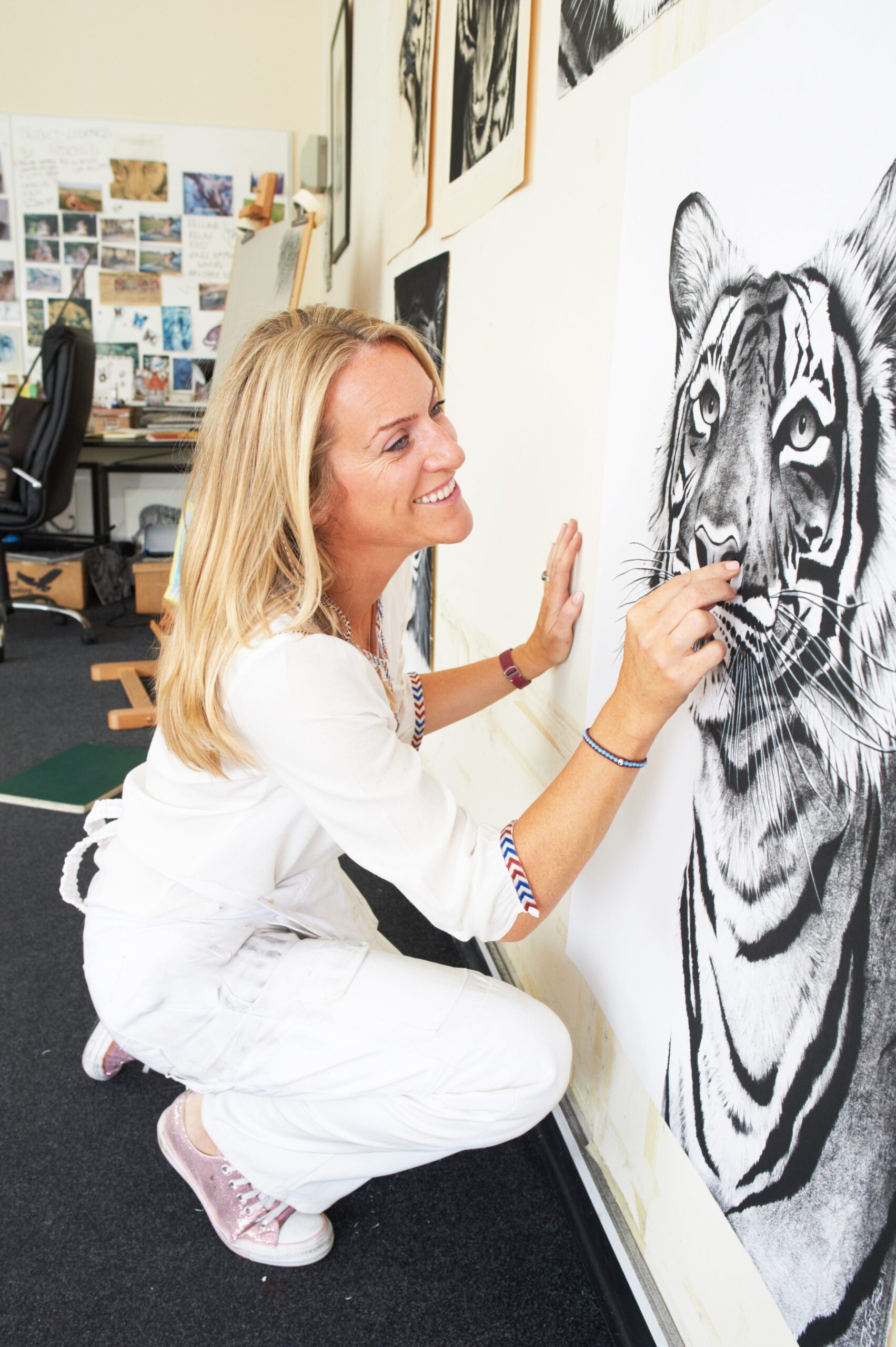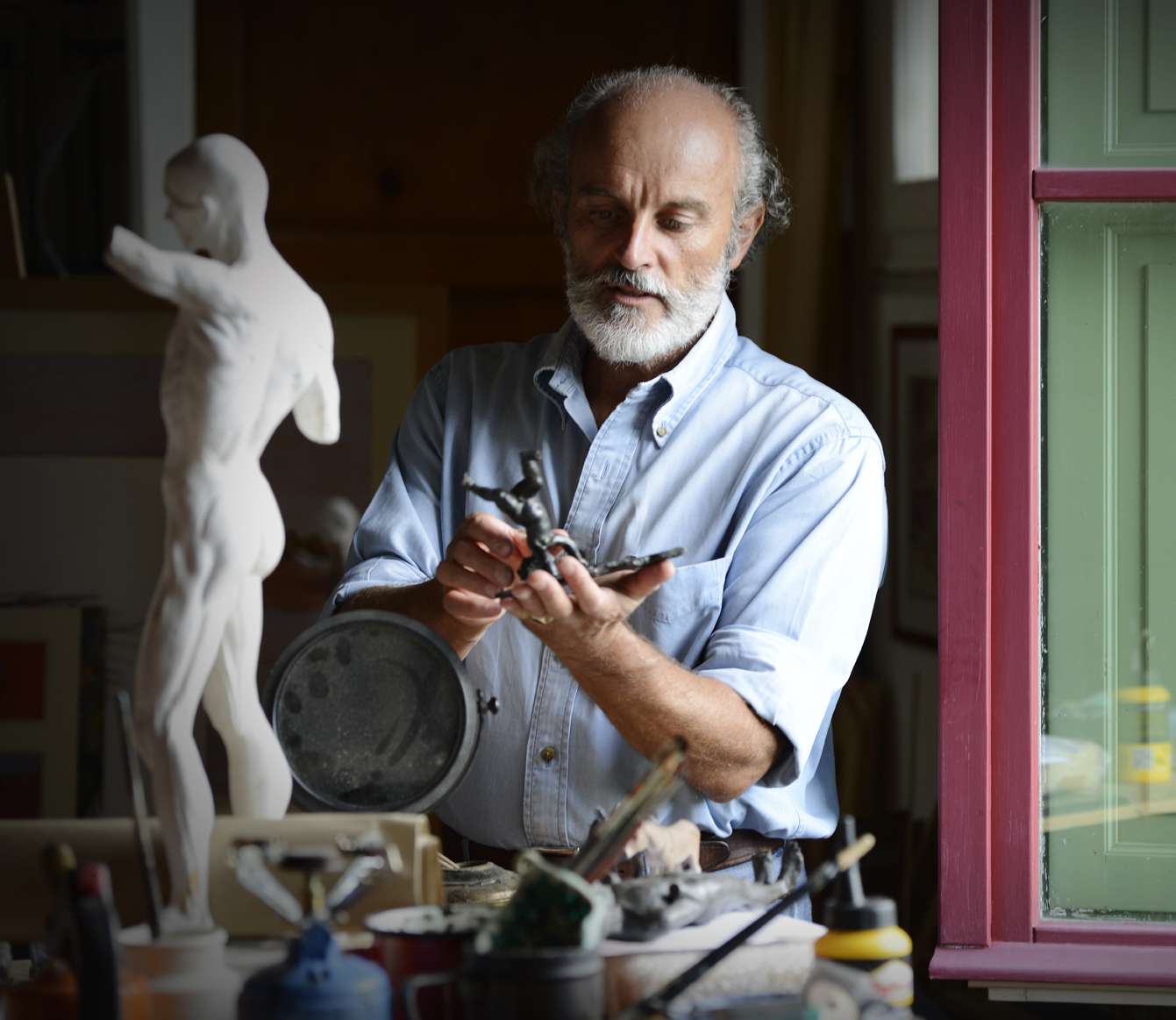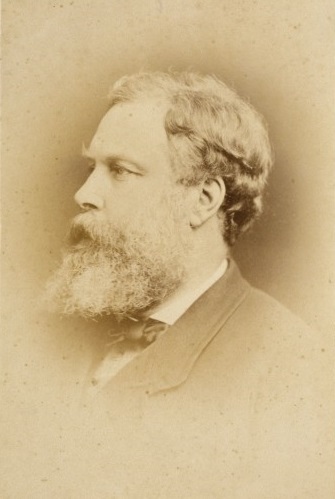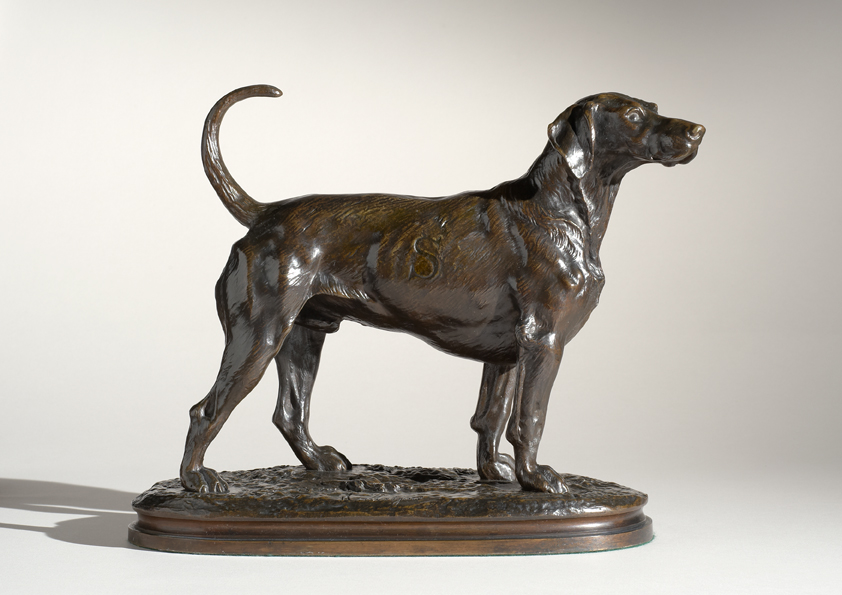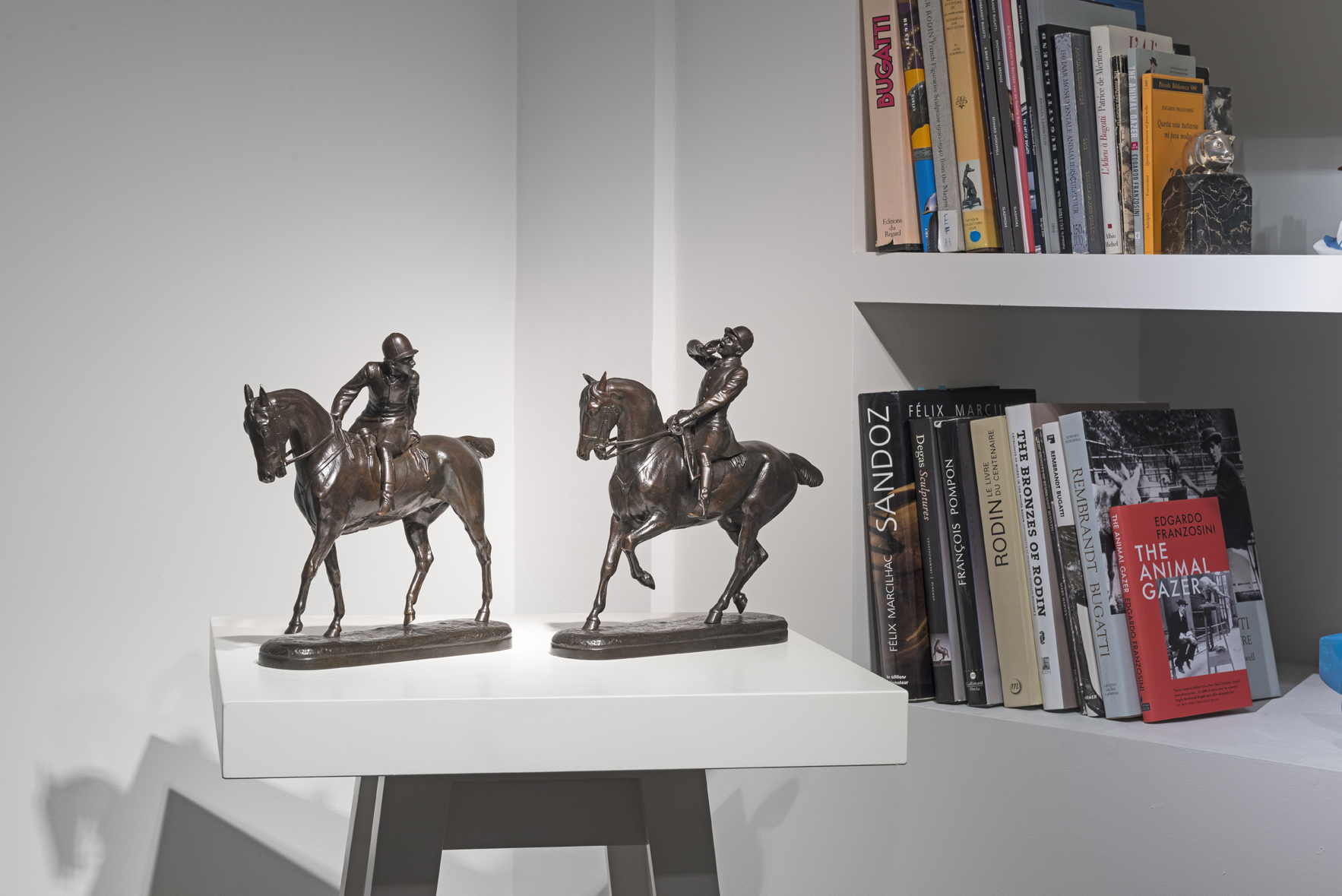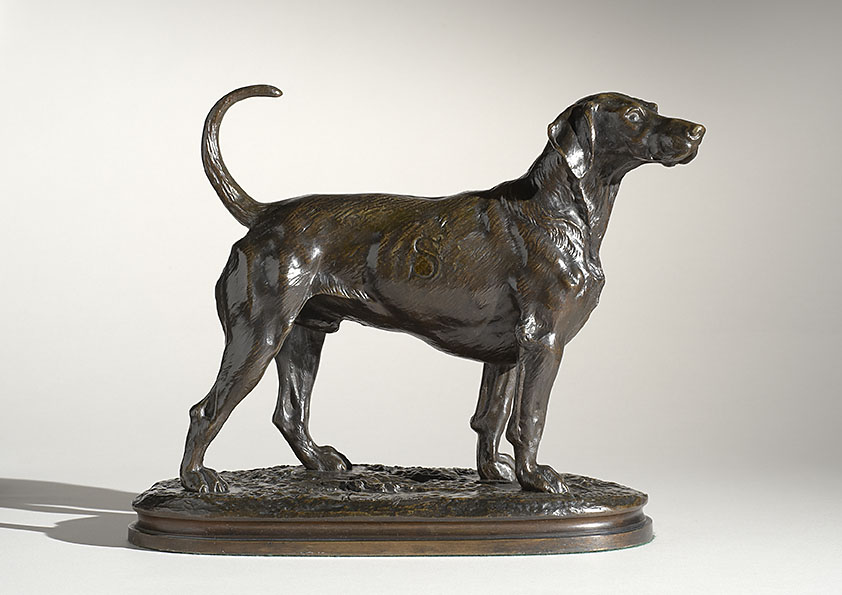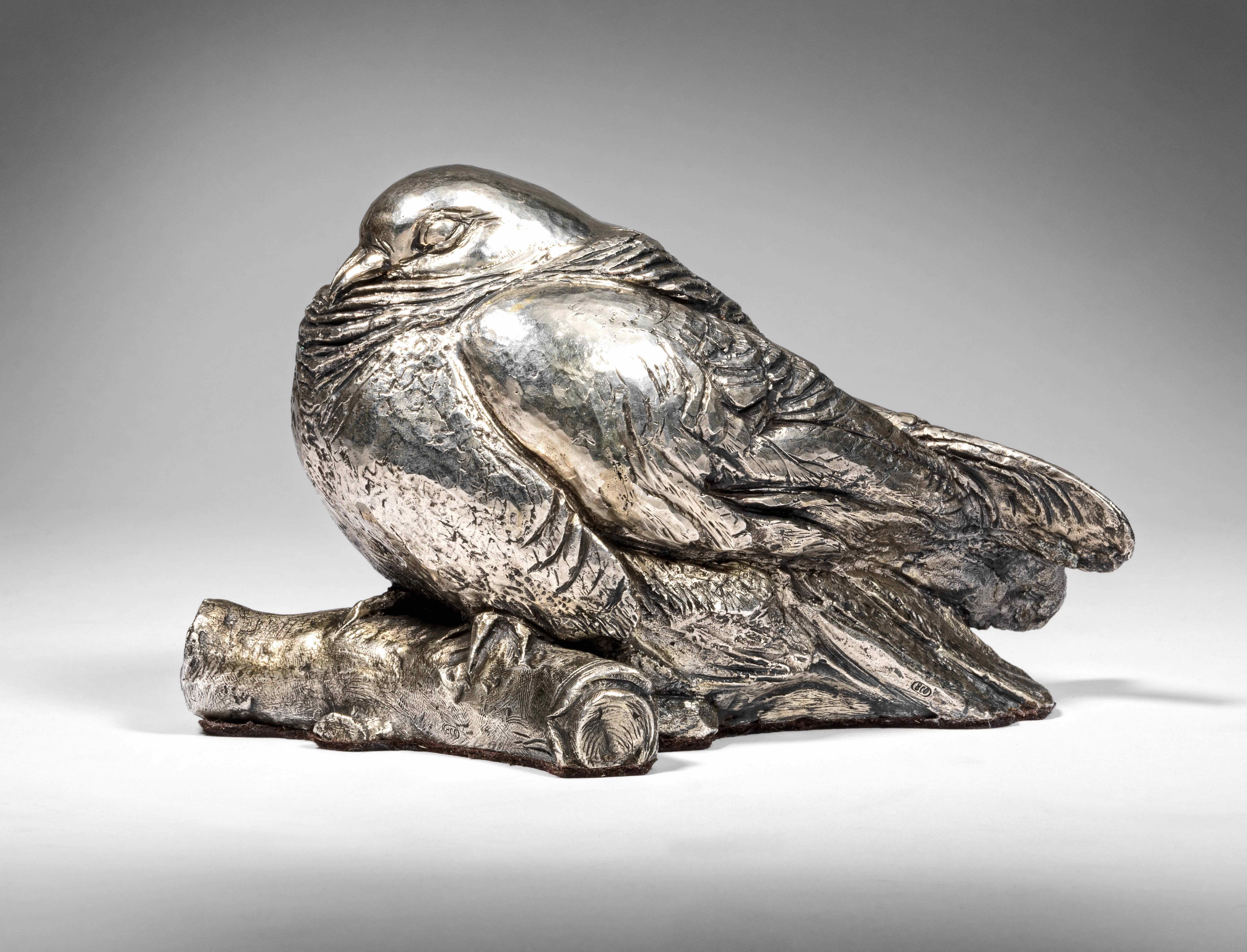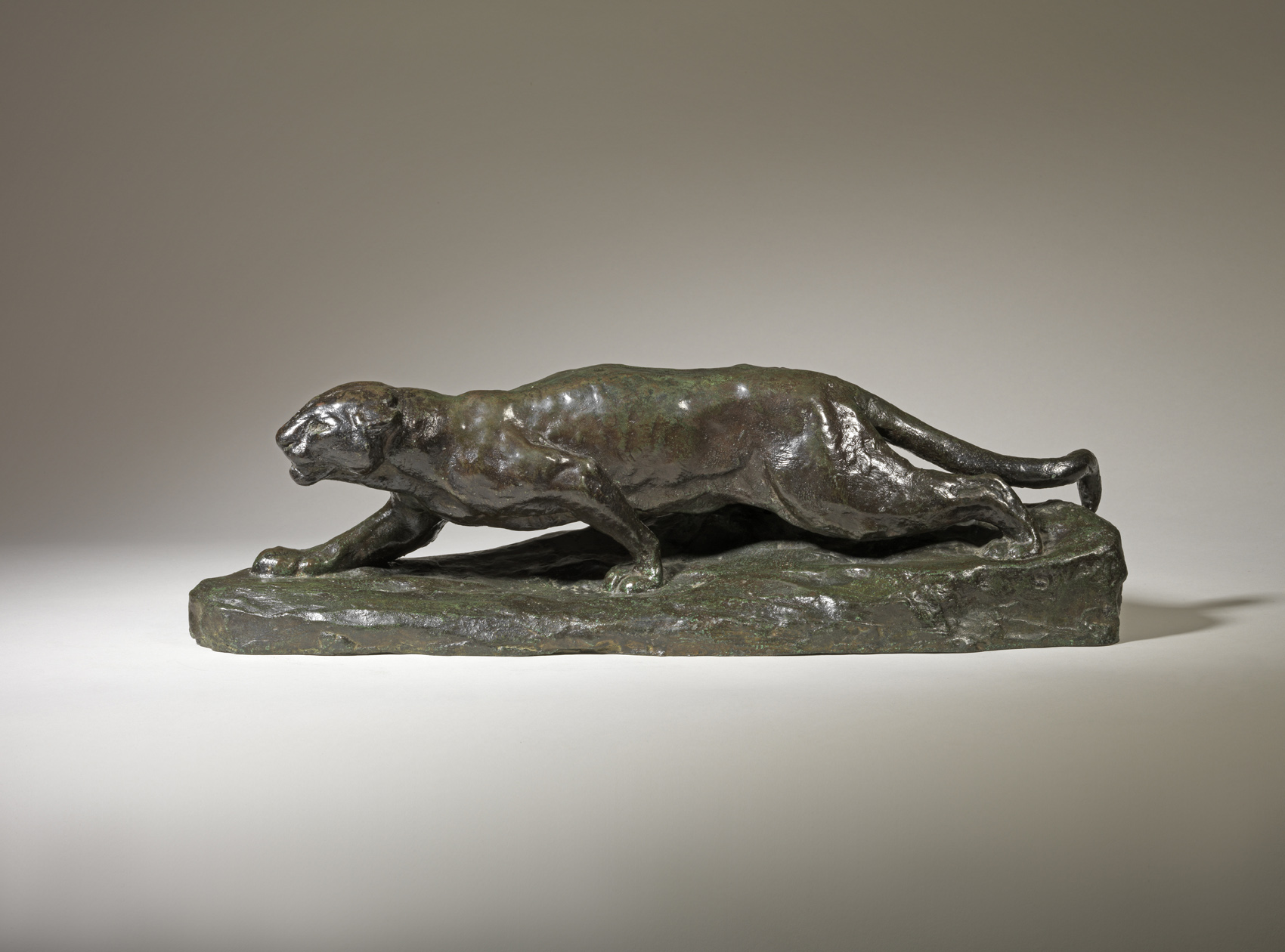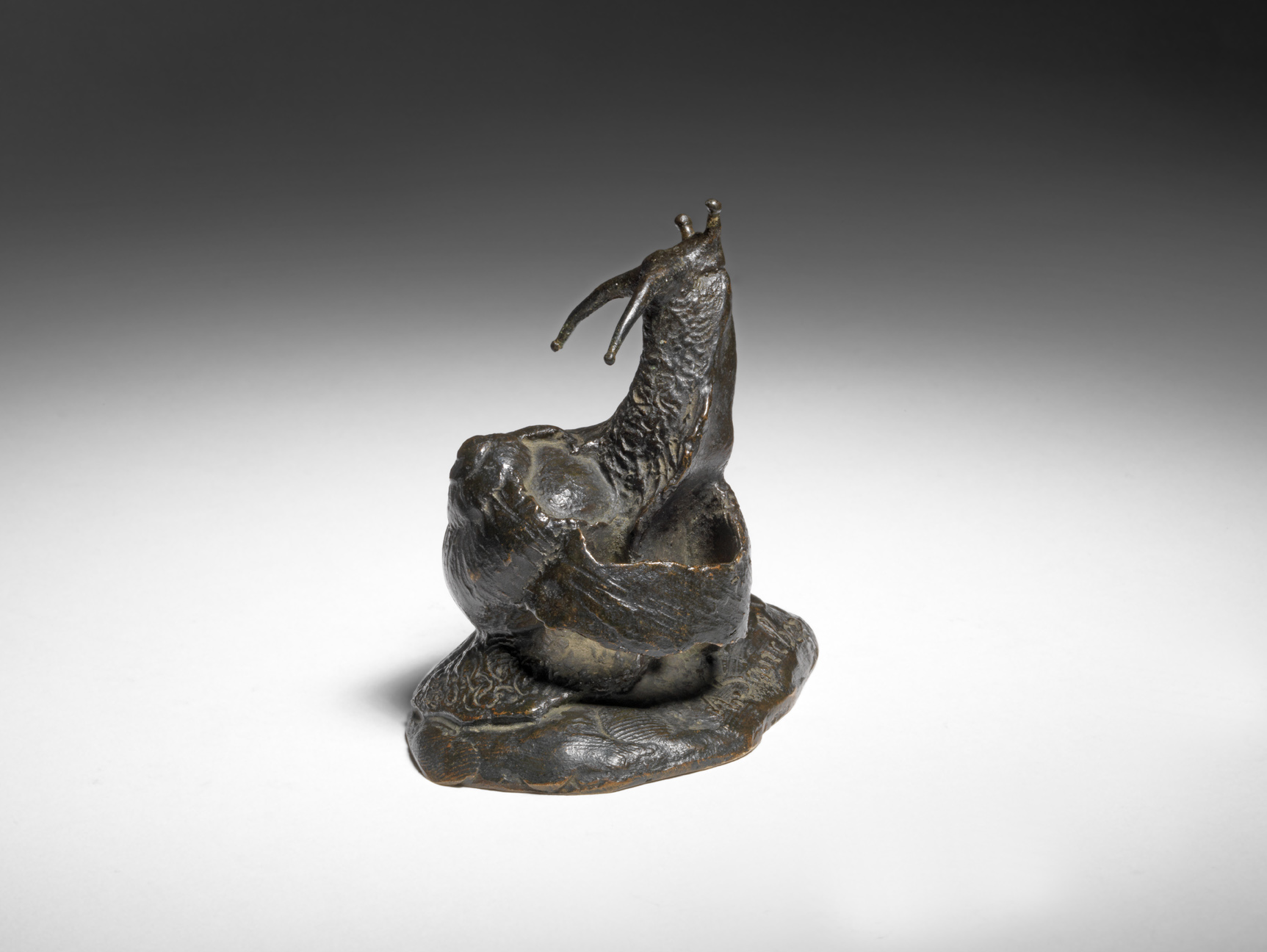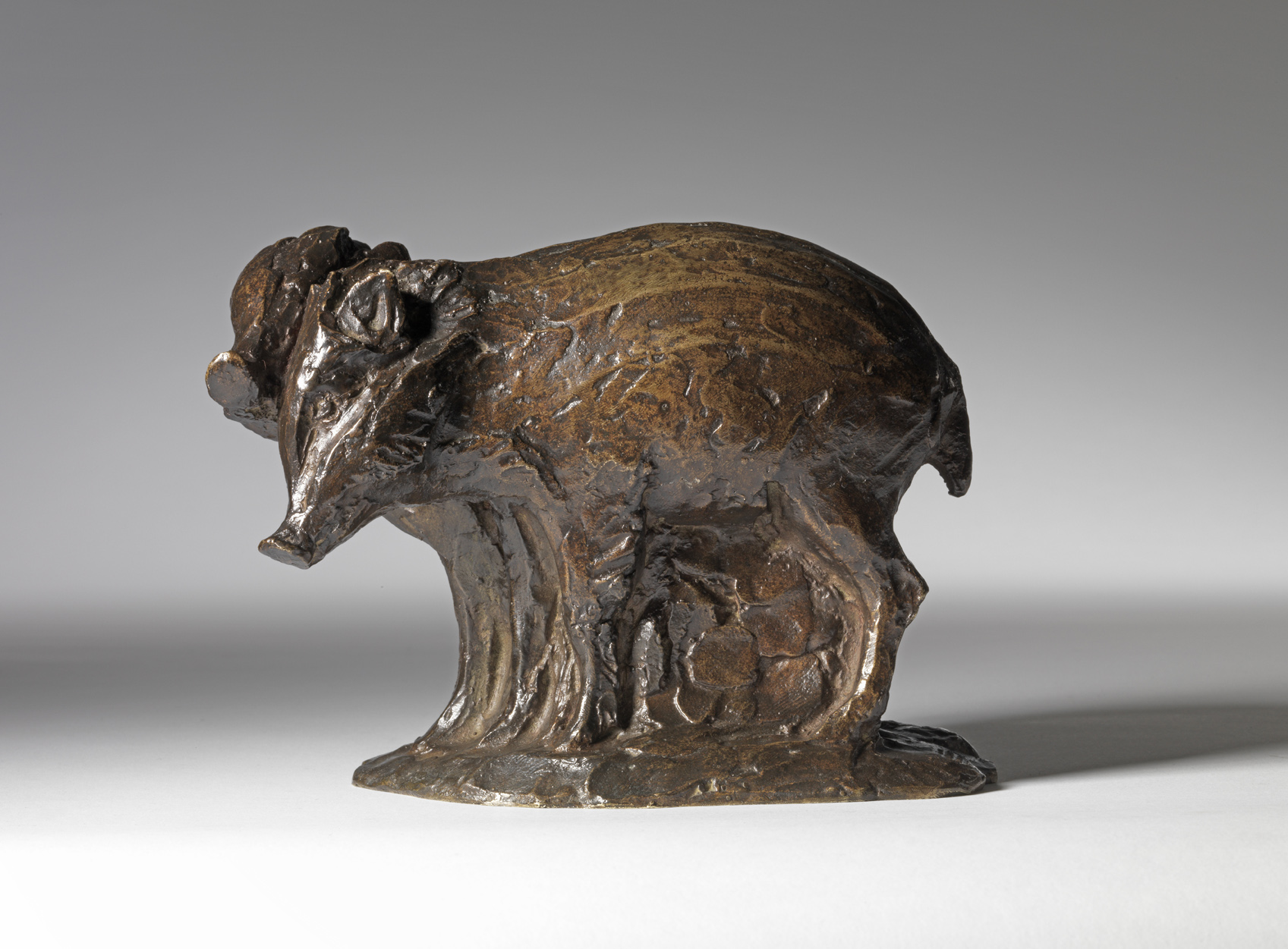Sculptors of the Forest
Our current exhibition is a collection of sculptures inspired by the forest habitat.
This curated selection of woodland birds and animals depict the creatures that we so often marvel at through the admiration of the artist’s eye. Works included span three centuries, from the faithful detail of Antoine-Louis Barye, to the distilled forms of Wilhelm Krieger, and the joyous shapes and forms of Sophie Dickens.
“I went to the woods because I wished to live deliberately, to front only the essential facts of life, and see if I could not learn what it had to teach, and not, when I came to die, discover that I had not lived.” – Henry David Thoreau


Artist Spotlight
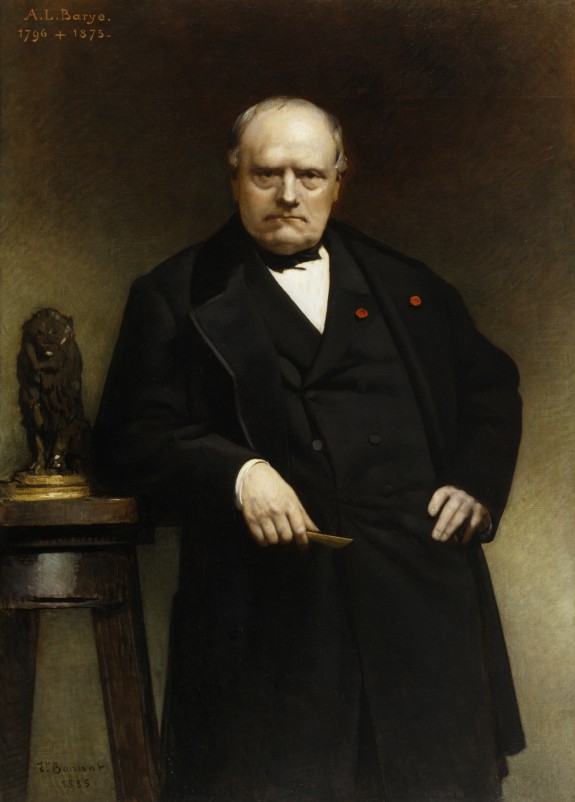
Antoine-Louis Barye
French, 1796-1875
The master of masters who clung to nature with all the force and tenacity of a god and dominated everything. He was beyond all and outside of all art influences, save nature and the antique. He was one of, if not the most isolated artists that ever lived. Emphatically original, and the first in the world of that kind of originality, he was himself and himself alone… He is our great glory and we shall have to depend on him in coming generations.’ – Auguste Rodin
Barye was an artist of enormous complexity, who embodied many overlapping tendencies of his age – Romantic, Neo-Classical, Realist and Orientalist. As suggested in Rodin’s fulsome tribute, Barye showed the way for other sculptors both to find new, dynamic interpretations of traditional themes
and to break out into fresh subject matter, as in his purely ‘animalier’ pieces. Just as importantly, he was an independent spirit whose example demonstrated that new strategies could be invented for artists to conduct their careers.
The depiction of animals, directly and without obvious anthropomorphism or allegorical intent, was indeed one of Barye’s goals. Alongside Delacroix, he studied live animals, and dissected dead ones, making scientifically rigorous drawings and careful measurements, to gain total familiarity with animal structure and movements. His ‘bibles’ were the anatomical treaties by Cuvier,
Lamarck and Buffon. In his final sculptures he encapsulated all his factual knowledge of his subject and was then able to expressively ‘distort’ the facts for the sake of re-animating his creatures with drama and vigour.
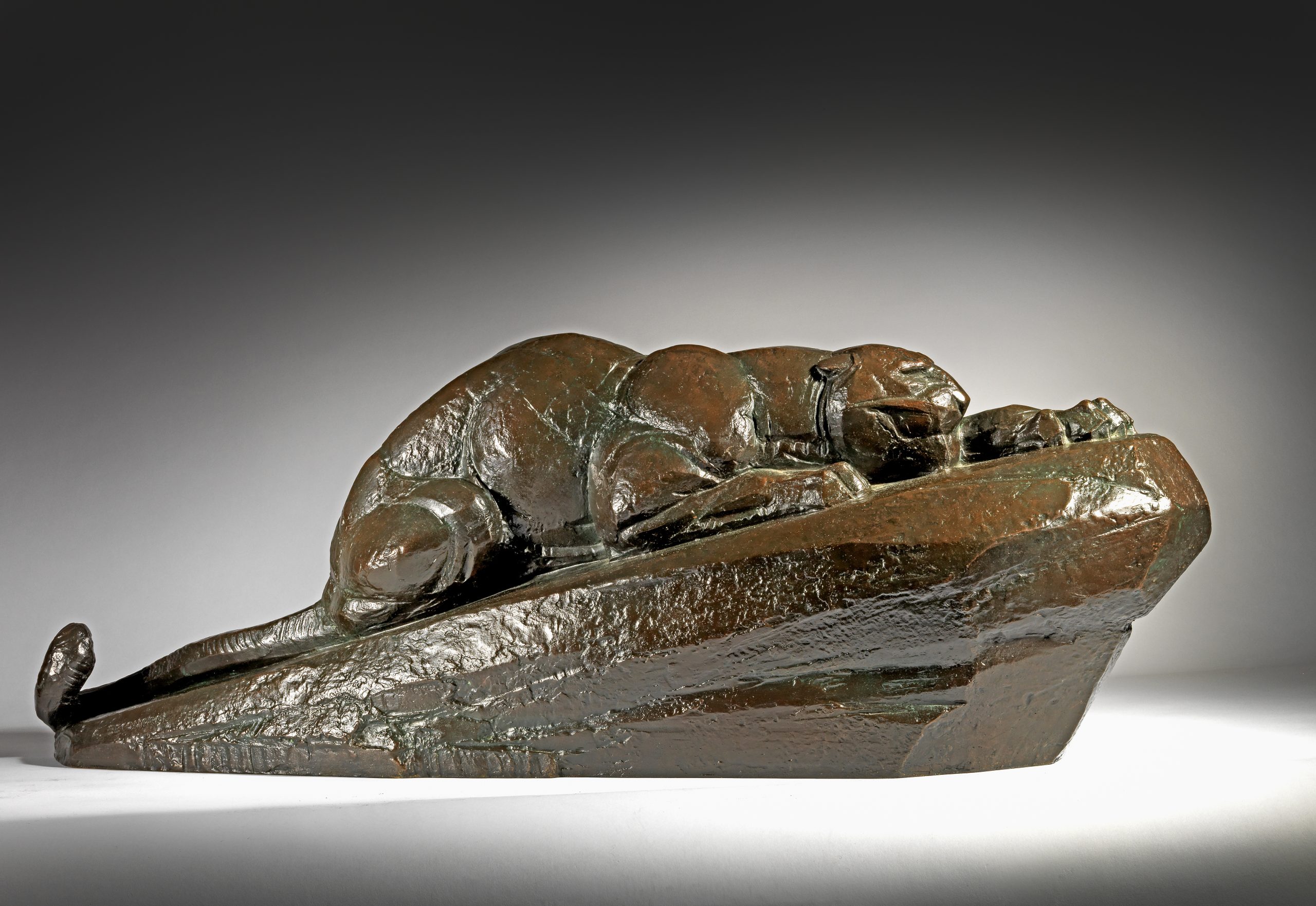
Andre Vincent Becquerel
French, 1893-1981
His favourite subject matter was cats that he often captured frozen in movement – stalking or tearing at a tree stump. He modelled deer and wild boar at full stretch and some very original and decorative fish leaping from the water, caught in mid-air. He also sculpted a series of small birds perched on branches, sometimes alone but more often in groups of two, three or four.
Becquerel also worked in ceramic and carved in both ivory and marble. He had great success with some small chryselephantine figures, decorated with a mixture of bronze, ivory and onyx.
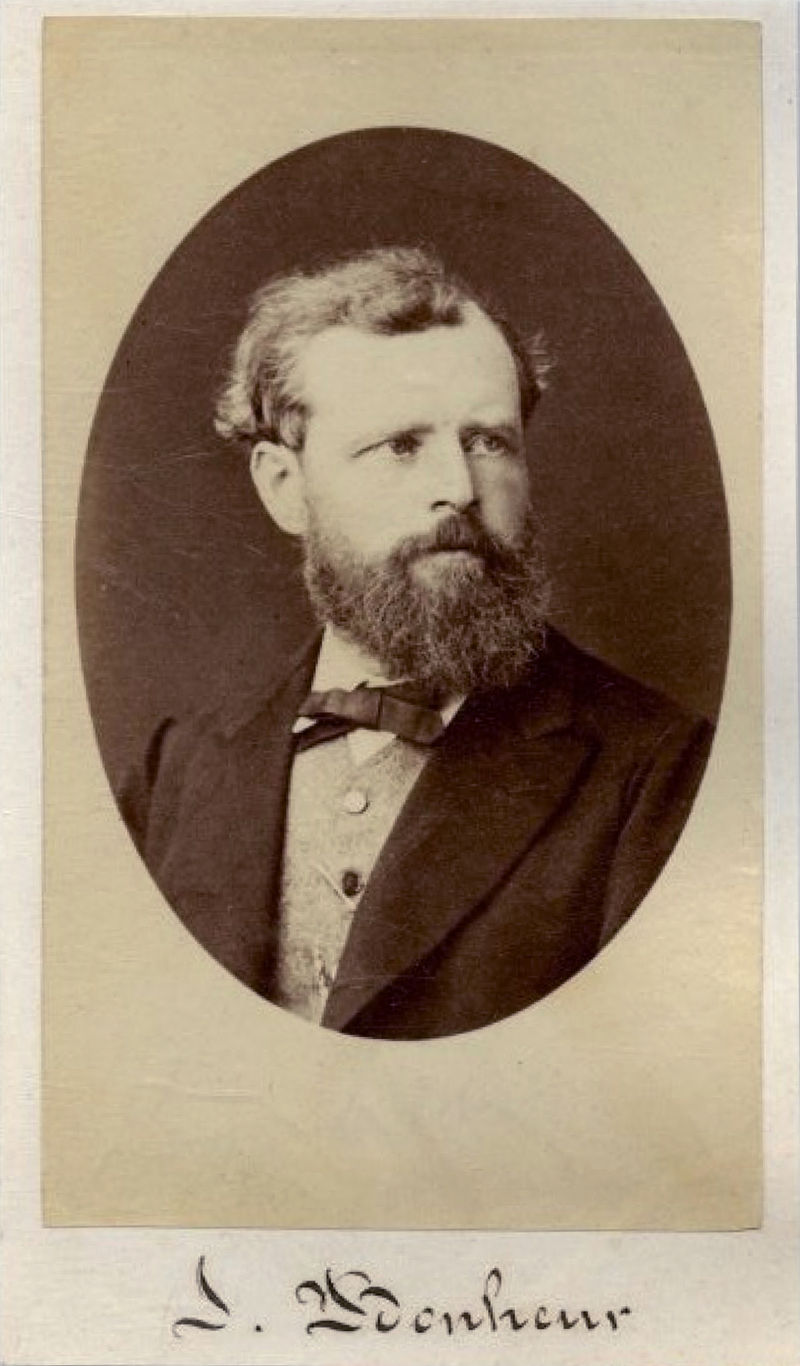
Isidore-Jules Bonheur
French, 1827 - 1901
Ses œuvres nombreuses, qui lui valurent des médailles successives … sont d’une sage exécution et d’une inspiration élevée. Roger-Miles
Bonheur was one of the leading realistic animal sculptors during the second half of the nineteenth century. Whilst he excelled at capturing his chosen subject with anatomical accuracy, he also imbued his more complex equestrian groups with a glamorous and highly decorative feel.
Coming from the famous Bonheur ‘dynasty’ of artists, Isidore Bonheur produced major public sculptures such as the Place Dauphin Seated Lions in Paris, as well as his most characteristic animal pieces for private patrons.
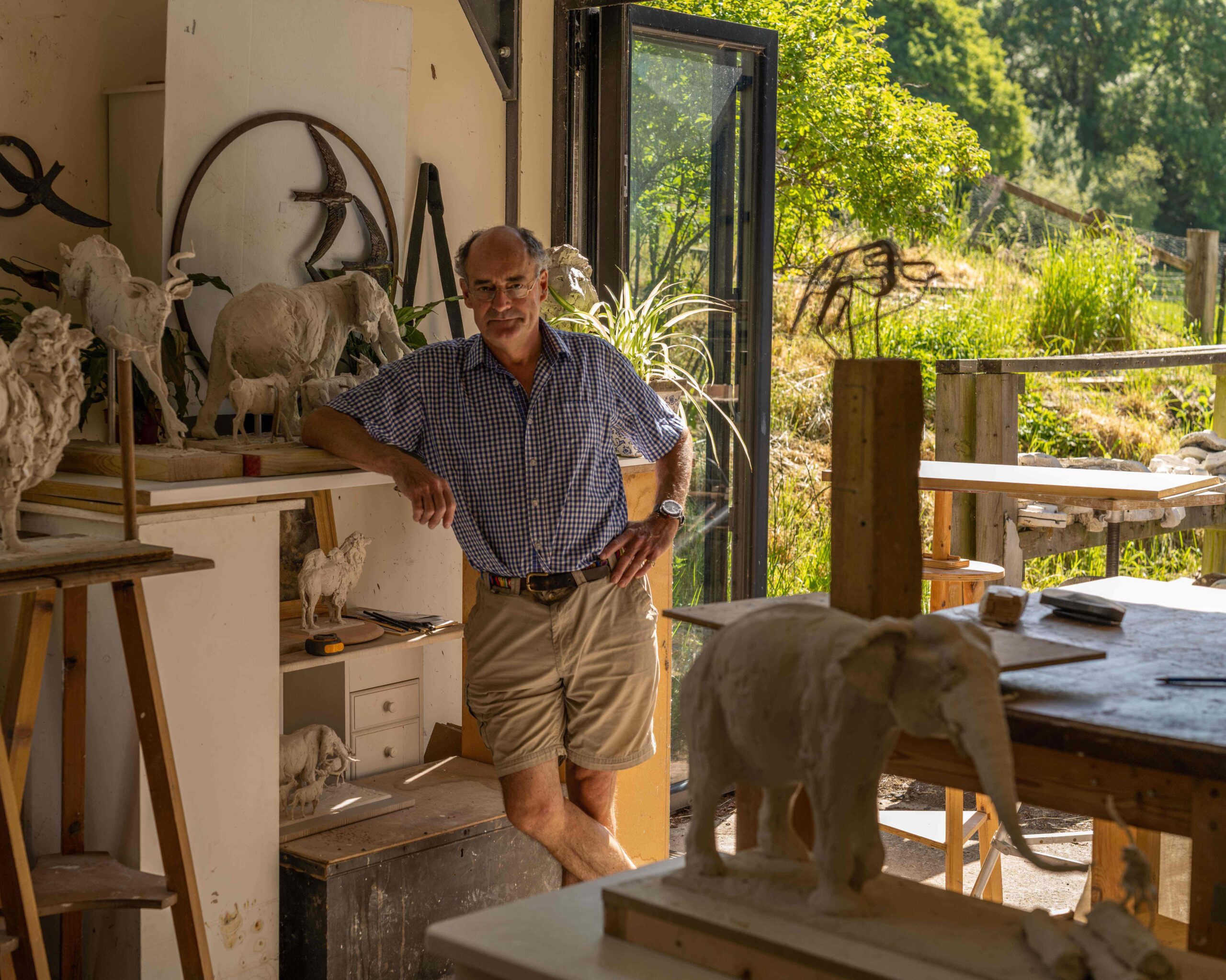
Mark Coreth
British, born 1958
Mark Coreth’s work reflects his instinctive understanding of the moods of the animals he sculpts. His success as a sculptor is borne of an acute and perceptive eye, coupled with the wealth of experience gained during his early years in Kenya and from his travels ever since to observe animals in their natural habitat. Mark’s working methods include modelling in clay direct from his subjects, live in the field; a practice which vividly translates into the fluid and impressionistic nature of his sculpture, capturing both the spirit of the animal but also that of their environment. His work ranges from small, intimate field-studies to life-size and monumental sculpture.
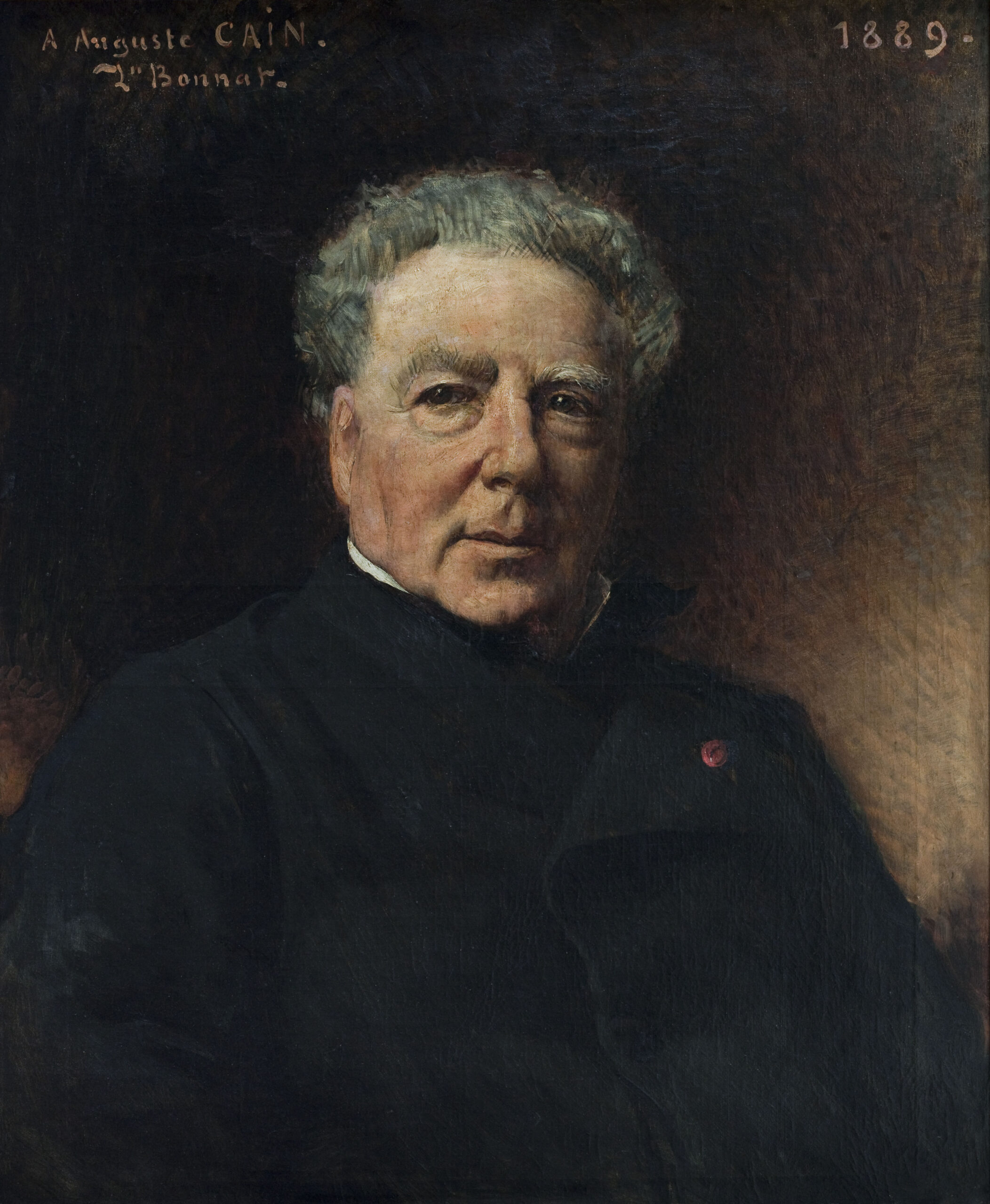
Auguste Nicholas Cain
French, 1821 - 1894
Like Antoine-Louis Barye before him, Cain stands out in his generation for success as both a monumental sculptor and as founder of his own serial bronzes. Cain’s oeuvre reflects an equal concern for “high,” industrial, and decorative art….. His prolific small-scale work displays a stylistic variety that is absent from the large-scale public projects, a difference that suggests a respect for artistic modes–high public work versus informal private objects. Cain’s monumental work aligns him closely with Barye in the majestic grandeur that accompanies its naturalism, whether the subjects are in repose or dramatically active.
The son-in-law of Pierre-Jules Mene, Auguste Cain was rooted firmly in the tradition of highly detailed ‘models’ for which Les Animaliers are best known. He shared his father-in-law’s foundry, but unlike Mene, he accepted many government commissions for works destined for important buildings and public places. He made his debut at the Salon of 1846, and in the period between 1847 and 1888 thirty-eight works are listed as commissioned or exhibited at the Salon.
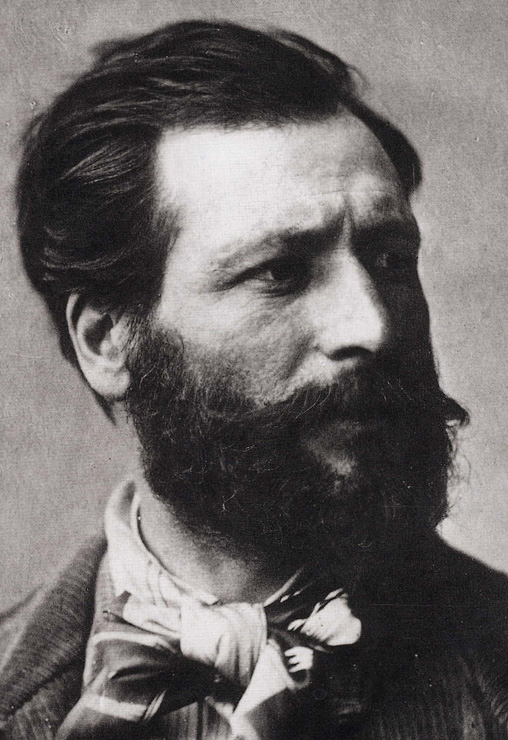
Jean Baptiste Clesinger
French, 1814 - 1883
Jean Baptiste Clesinger was born on 20 October 1814 at Besancon. He received his artistic training from his father, a sculptor in the academic tradition, but also from Bertel Thorvaldsen and the architect Gaspare Salvi. In 1839 he studied for a short time under David D’Angers before travelling within Europe. In 1843, Clesinger made his debut at the Salon with a marble statue of the Vicomte Jules de Valdahon, subsequently specialising in portrait busts and equestrian statues on a grand scale.
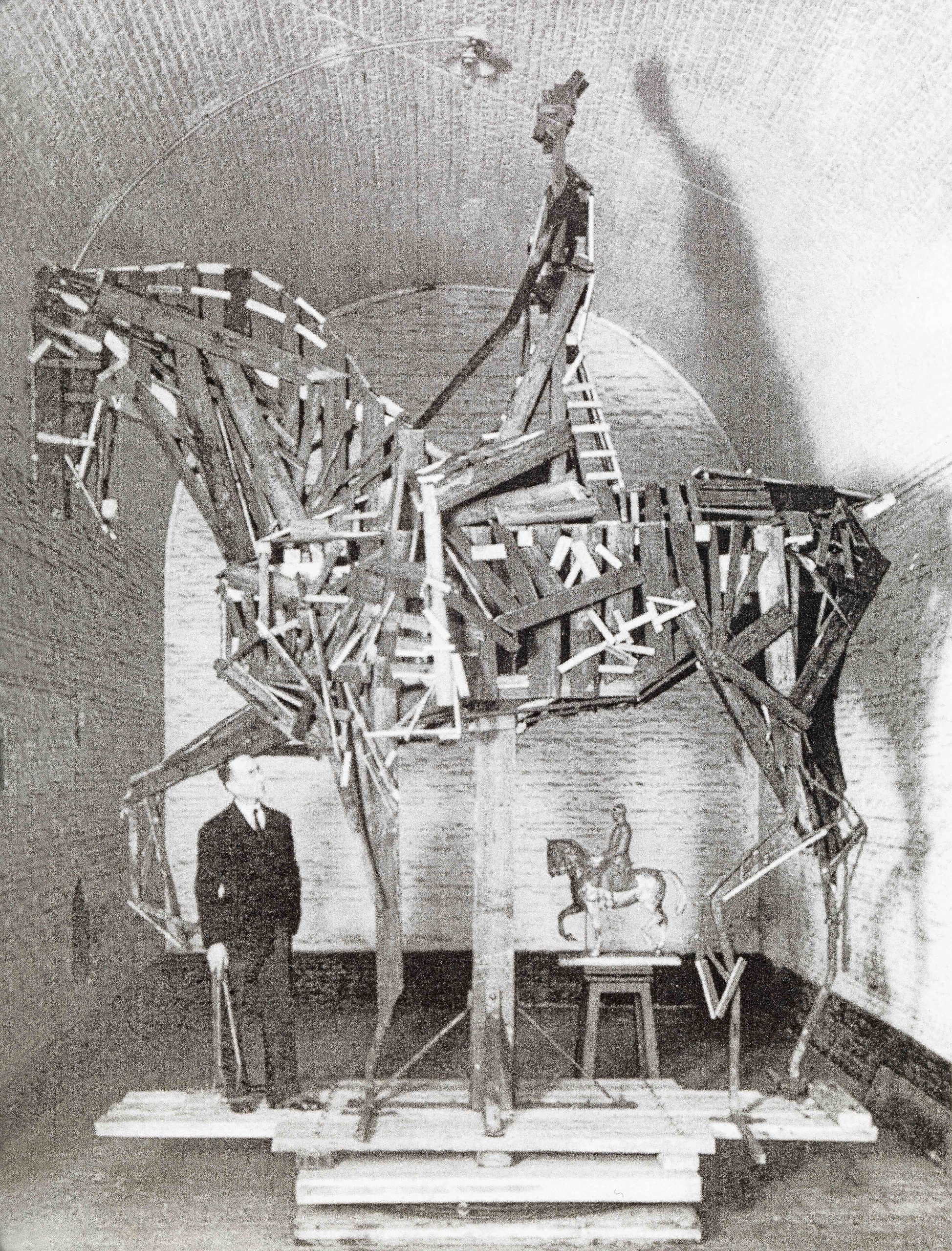
Georges Collard
Belgian, 1881-1961
Whilst Georges Collard’s work is rare to appear on the market it is always of exceptional merit. After careful observation at the Antwerp zoo he would then settle on a typical pose adapting his modelling style to suit each animal’s surface texture.
With his brother and the sculptor Frans Jochems he was in 1907 one of the founding members of the “Antwerp artists’ and sculptors’ circle”. He specialised in depictions of animals – preferably in movement – and developed into one of the most original talents in this area. The way in which he modelled and gave form to his sharply observed subjects has something idiosyncratic about it that makes his sculptures easily recognised.
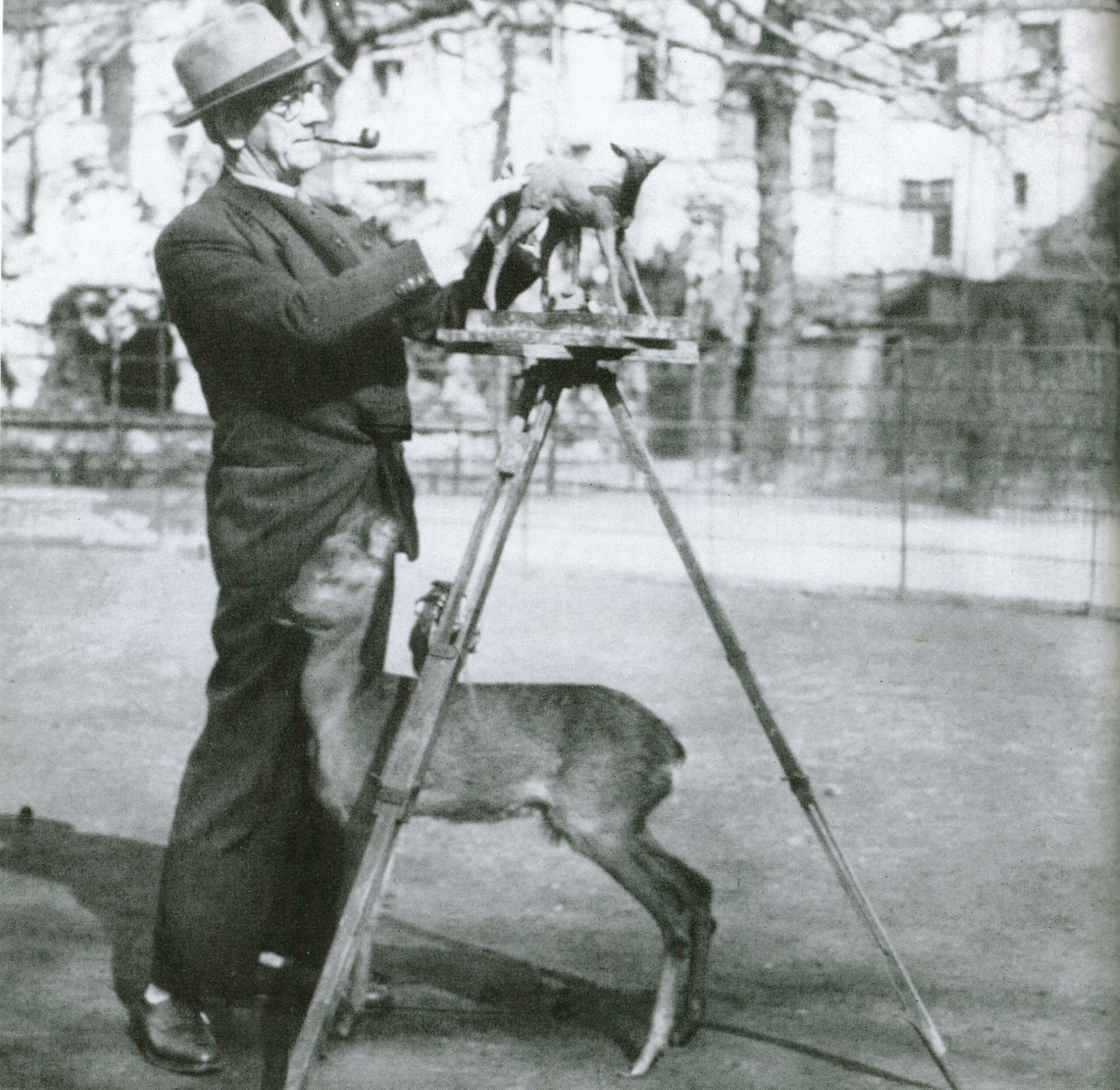
Albéric Collin
Belgian, 1886-1962
Collin displayed modernist concerns with abstract form, lively expressive texture and dynamic and inventive outline; yet he avoided generic formulas, achieving a distinct sculptural personality of his own.
Collin’s regular attendance at Antwerp Zoo was doubtless the most formative factor in his development as a sculptor. Here he met many Belgian and foreign colleagues, including Rembrandt Bugatti, Raymond de Meester and Paul Jouve, but also, and most importantly, it gave him a close knowledge of the animals housed there. Nothing about their anatomy, their characteristics or their behaviour escaped his keen eye.
In the early part of his career, Collin’s relationship with the artist Rembrandt Bugatti was hugely significant. An individualist, Bugatti instilled into Collin to trust his own perception, honing his skills of observation, rather than adopting a stylistic manner or method.
Collin’s beginnings as a caricaturist enabled him to draw on the individual styles of several of his sculptor contemporaries. However, by the early 1920’s his expressive stylisation comes to the fore, and no one can really detect a ‘Collin’ style. He produced a large body of work, almost always cast by C. Valsuani in Paris, in editions of just seven examples. With so few castings of each model, it is rare that we have seen a work in bronze appear on the market more than once in recent years.
Albéric Collin is today the best-known Belgian animal sculptor.
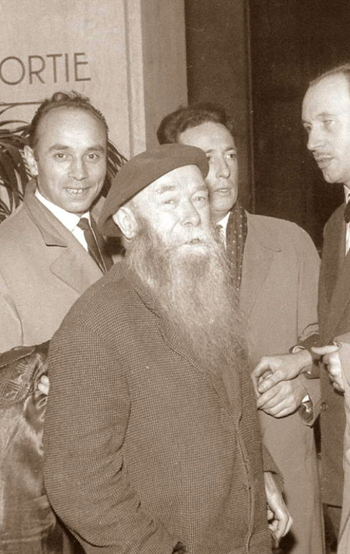
Raphaël Louis Charles Diligent
French, 1885 - 1965
Maurice Bardin claims in his ‘Dictionary of Painters, Sculptors and Engravers in the Nevers Region’ that Diligent studied under both Rodin and Pompon.
Raphael Diligent was one of the artists who were part of the Montmatre school and as such had a rather difficult life and career. He was well known for his Rabbit sculptures but also produced busts and delicate figurines. He participated in the ‘Salon d’Automne’ and the ‘Salon des Artistes Indépendants’ in Paris from 1910 showing busts, nudes and Animalier pieces. He worked in the mediums of plaster, terracotta, wood and bronze.
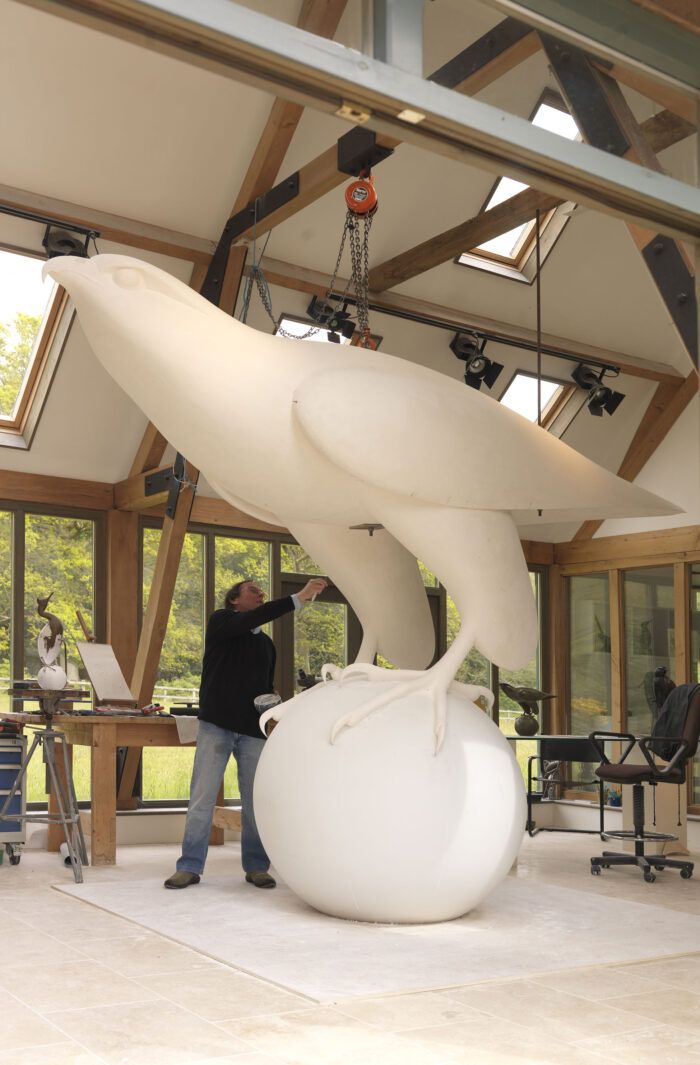
Geoffrey Dashwood
British, born 1947
A master sculptor of birds in bronze, Dashwood eliminates all superficial detail to attain refined forms with smooth surfaces, enhanced by the application of coloured and multi-coloured patinas. Although his work can be placed within the genre of wildlife art, Dashwood has transcended the subject matter and his bronzes are firmly established in the wider field of contemporary art.
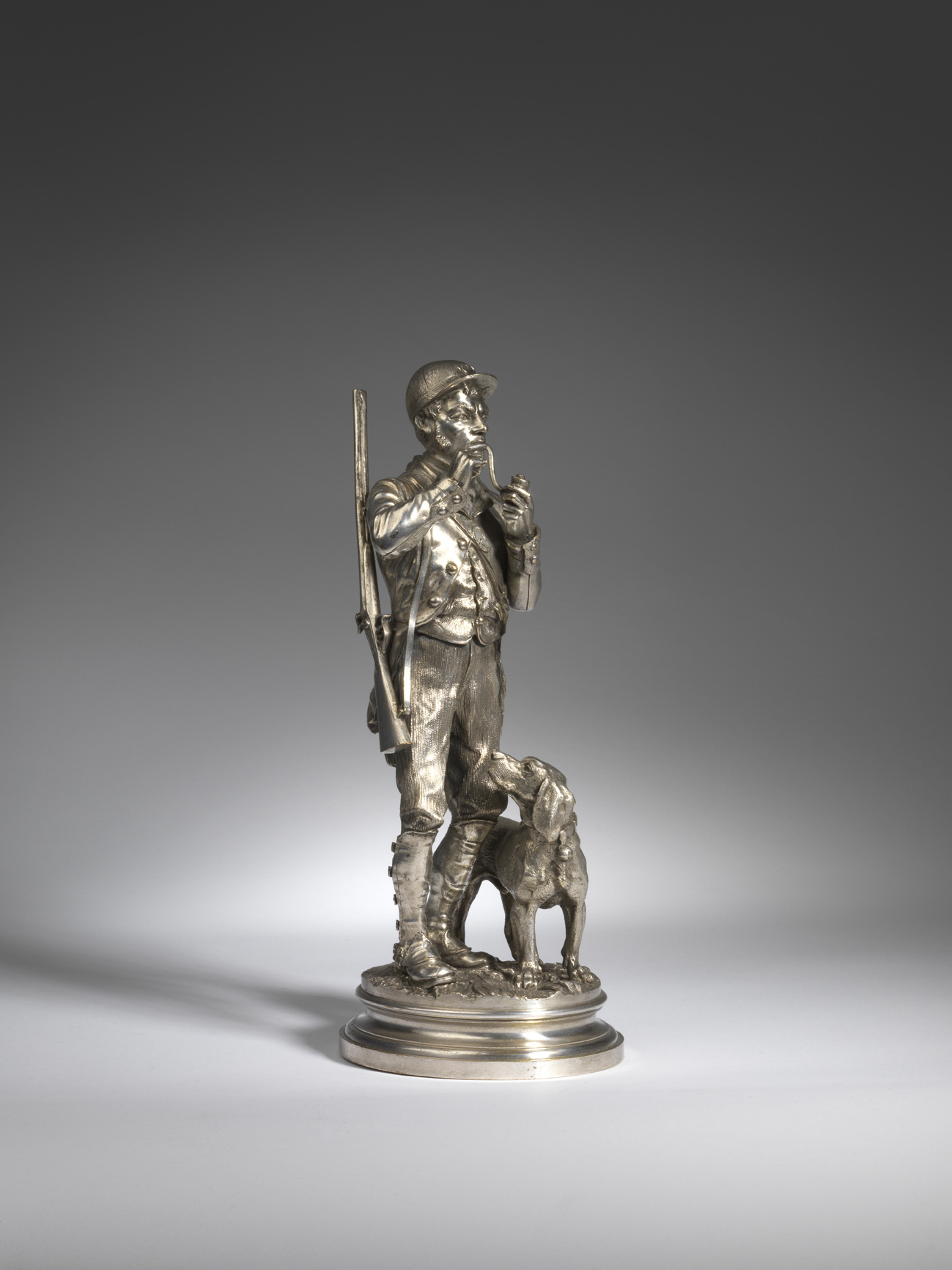
Alfred Dubucand
French (1828-1894)
One of the most well-known French Animaliers of the nineteenth century, Dubucand was a highly proficient sculptor. He could turn his hand to a wide range of subjects but seemed at his best sculpting dogs or birds
As a pupil of Antoine-Louis Barye, the most celebrated Romantic sculptor of the nineteenth century, Alfred Dubucand had the very finest of trainings. His oeuvre comprises mainly cabinet sized models the majority of which were cast in bronze during his lifetime. Whilst we do not know if Dubucand travelled to North Africa, he was drawn to Orientalist subjects and many of his models depict Egyptian and African hunting scenes or local people, such as the present work, and all are full of romantic character and fine detail.
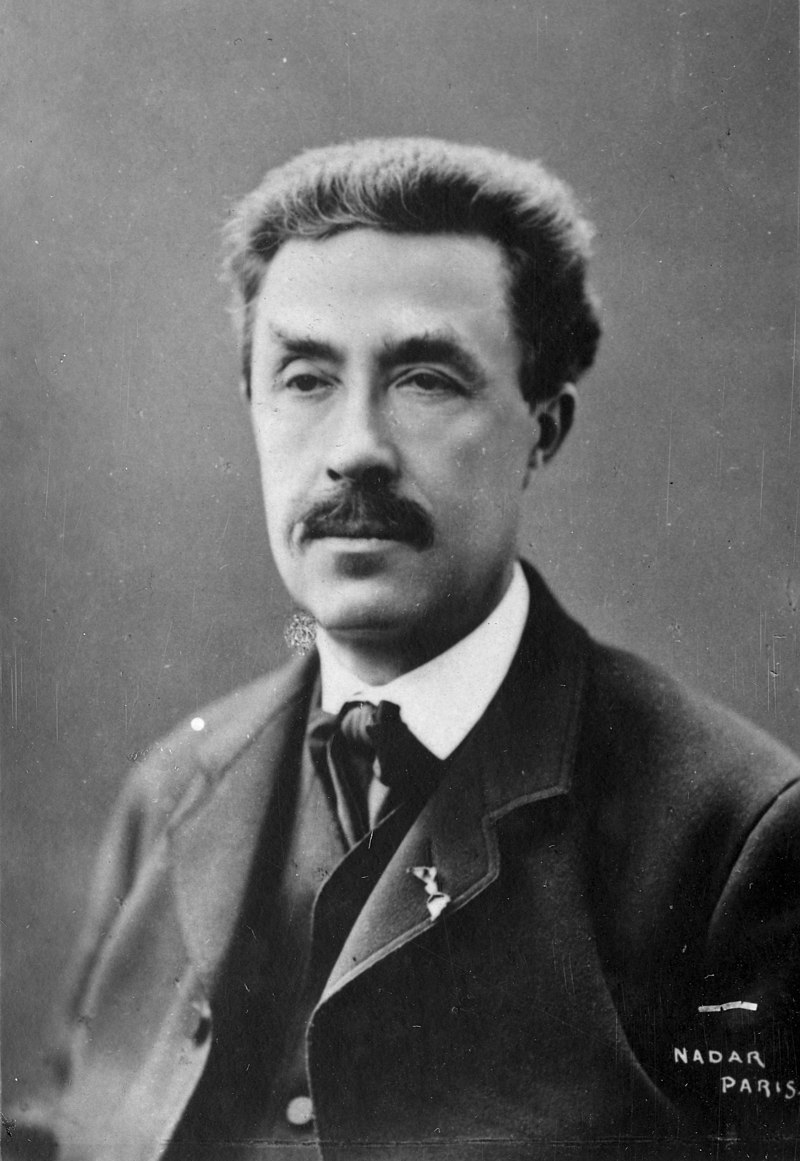
Emmanuel Fremiet
French, 1824-1910
A great sculptor, Fremiet was able to adapt to changing styles and developments throughout his life, hence his work is more concerned with attitude and impression rather than detail which would have been the major concern in earlier work.
Fremiet was a tireless worker and an ardent researcher, not only in the anatomical field, but also in the numerous varieties of dress he needed for his portraits and equestrian groups. The uniforms, armour, saddlery and harness that Fremiet depicted were all meticulously correct.
Fremiet was active in the marketing and commercial sales of his own sculpture and sold his marble bases separately and reworked groups with the elements sold separately.
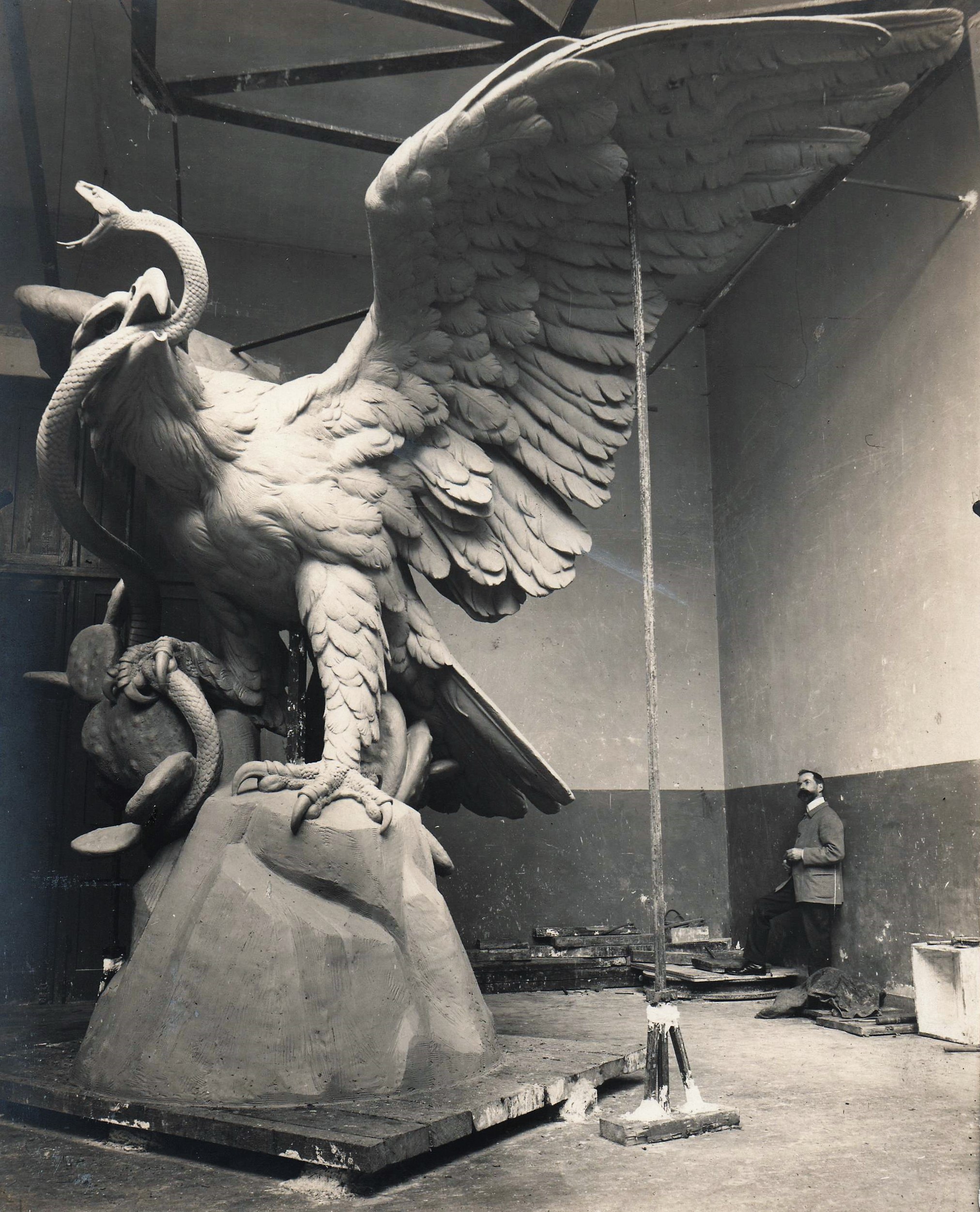
Georges Gardet
French, 1863-1939
Gardet was widely considered to be one of the most talented animal sculptors of his time. Though he liked translating the muscular strength of large game in combat, he also studied small animals
Gardet enjoyed tremendous popularity with his animal statuary and although he mainly worked in marble, his works were produced in bronze or were reproduced in Sevres porcelain and many of his sculptures are preserved in museums all over the world.
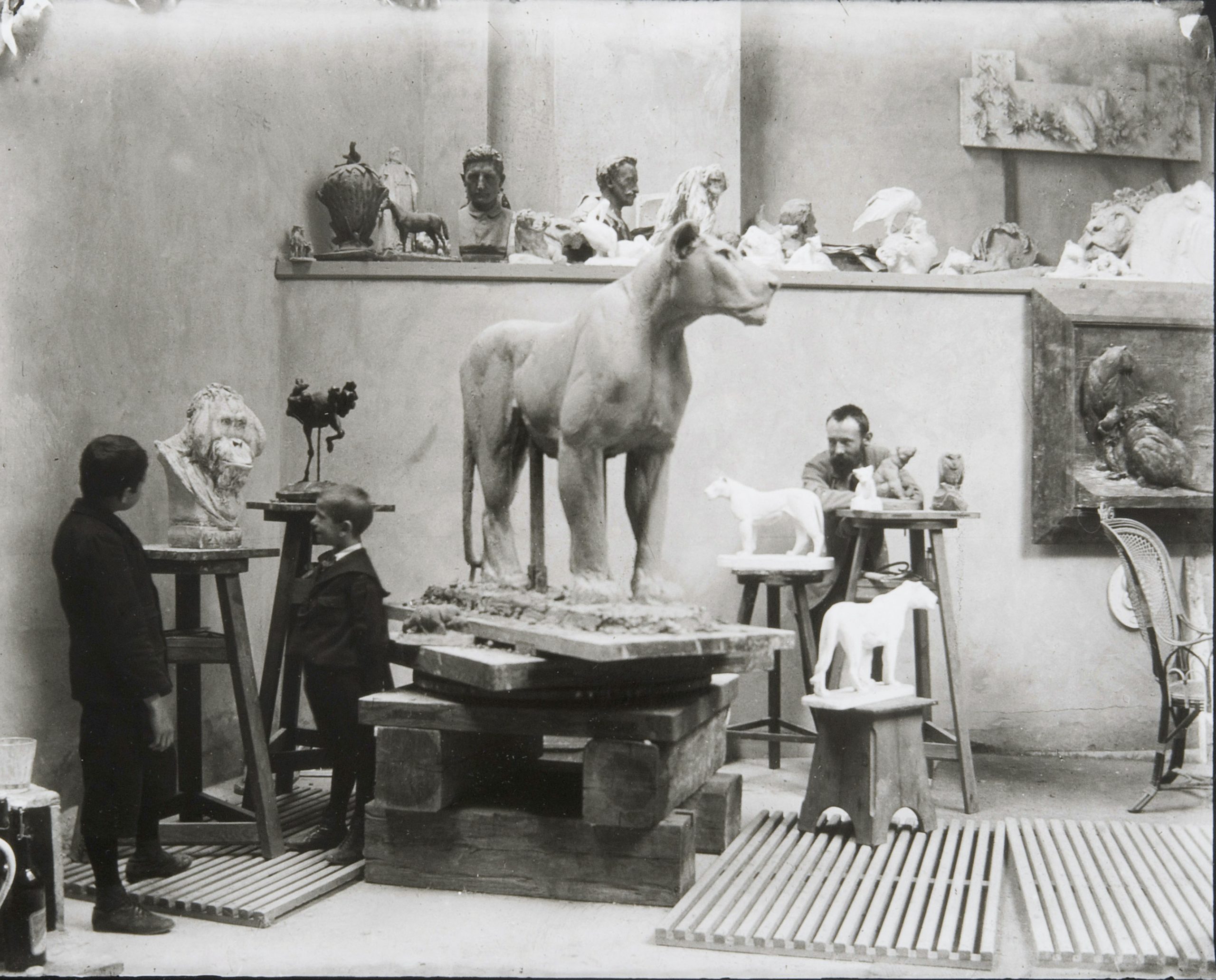
August Gaul
German, 1869 - 1929
Gaul became a great inspiration to other artists in the field of animal sculpture and beyond, and a great influence for many following sculptors such as Gerhard Marcks and Georg Kolbe.
Gaul’s oeuvre encompasses a wide range of different animals even though lions and bears as well as penguins and ducks seem to come to mind when first thinking of his sculptures. Gaul modelled mammals as well as birds, wild as well as domestic animals, as single figures, or small groups, on a small scale as well as life-size. Regardless of whether he depicted them in movement or still, he always captured the characteristic essence of each beast.
August Gaul was a founding member of the Berlin Secession. On close terms with art dealers like Bruno and Paul Cassirer, he became a leading figure in the Berlin art scene before World War I.
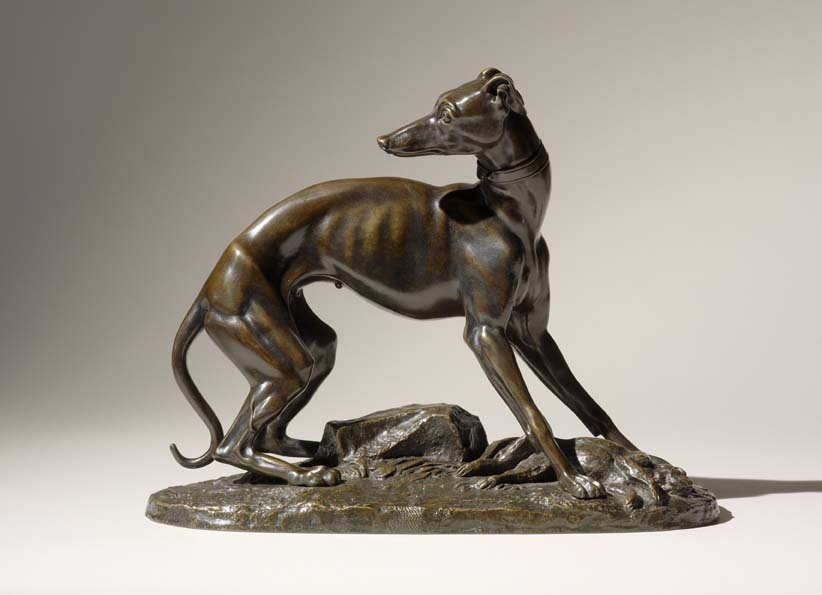
Jean-Francois-Theodore Gechter
French, 1796 - 1844
The large majority of Gechter’s oeuvre comprise equestrian subjects of which he is a well-recognised master.
Although primarily known for his figures, portraiture and public statuary, Gechter excelled at Animalier sculpture and became a friend of Antoine-Louis Barye. He was particularly adept at modelling horses, and many of his compositions centred around the same basic pose of a horse shying with its neck lowered.
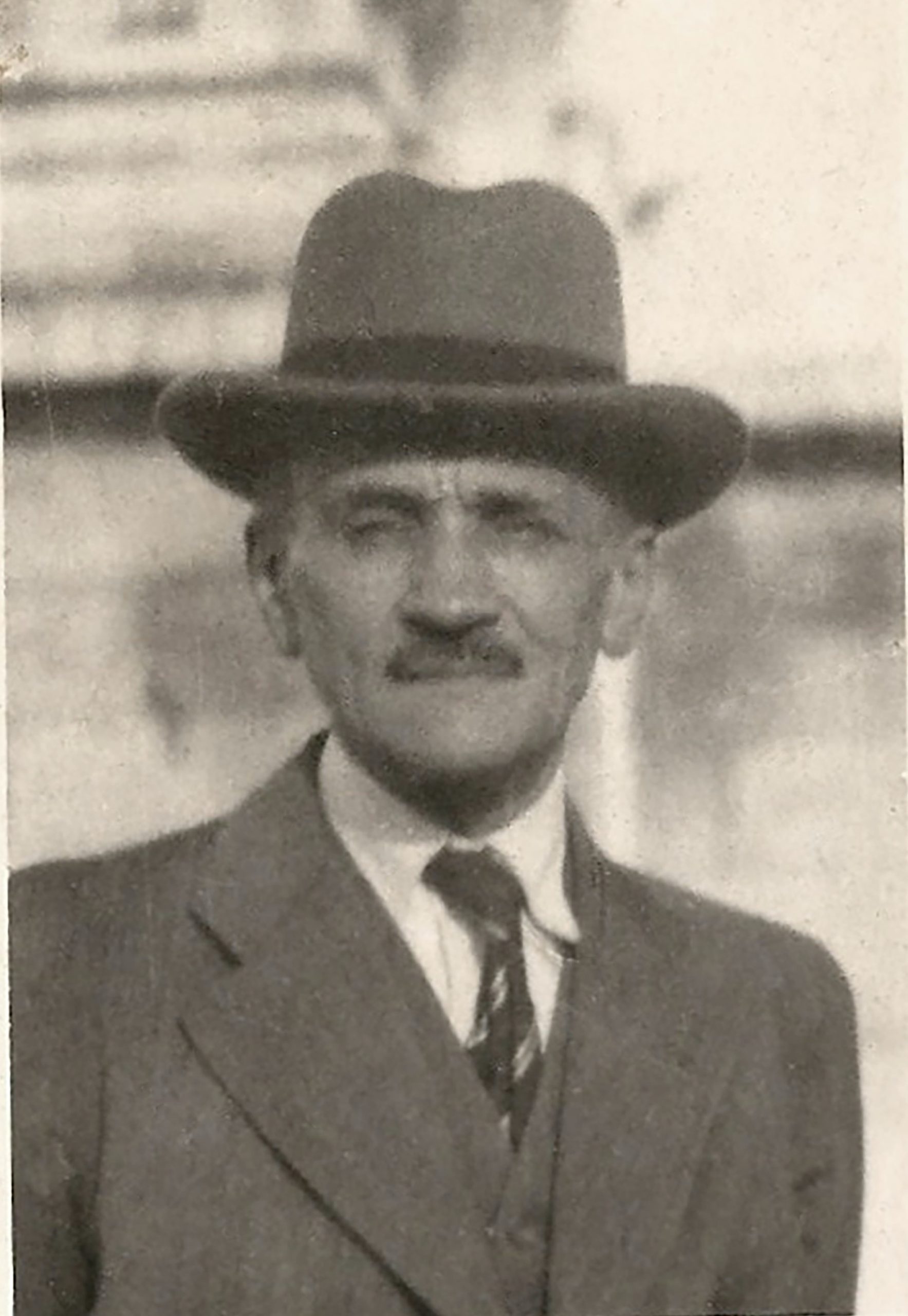
Roger Godchaux
French, 1878-1958
Godchaux was at the forefront of the French early twentieth century Animalier movement. His sculpting technique barely changed throughout his
long working life, although his surfaces perhaps became a little smoother.
Godchaux’s bronzes are recognisable by the rough almost impressionistic surface technique and the typical reddish chocolate brown patina that he used. There is also a real sensitivity evident in his treatment of the animals he modelled and their temperaments, which is consistent with the changes in sculpture that took place at the turn of the century because of the move to impressionism in paintings.
Godchaux found his models in the zoo, favouring young felines and large animals whose dense muscular mass gave him the challenge of portraying dynamic force in volume. Like Antoine-Louis Barye, for whom he had the greatest admiration, his work was based on strict observation reinforced by very fine detailed drawings. Godchaux had an impressive collection of Barye’s bronzes.
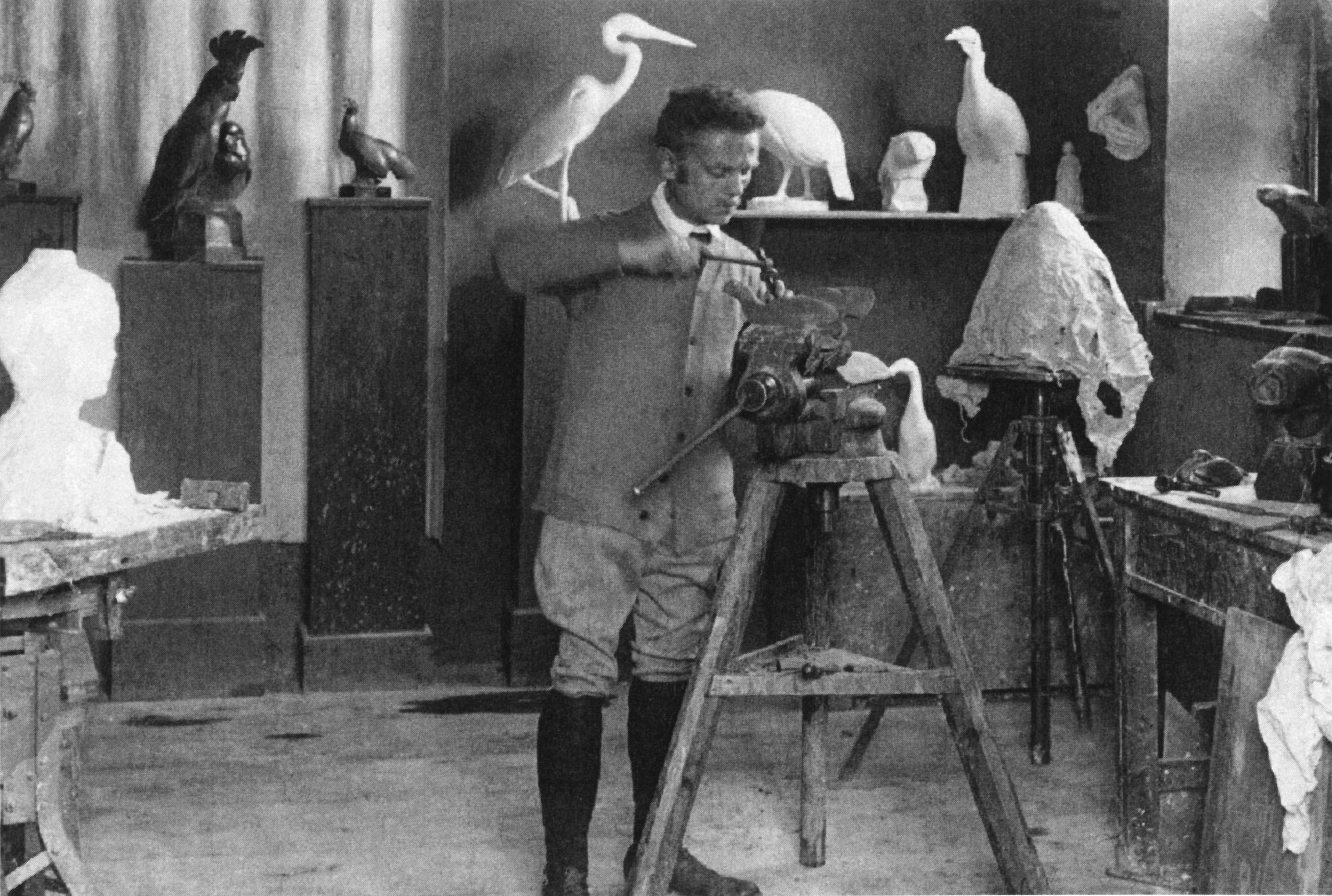
Wilhelm Krieger
German, 1877–1945
Wilhelm Krieger fits exquisitely into the circle of animal sculptors who are attracting a great deal of attention in today’s art market – sculptors such as August Gaul, François Pompon, Rembrandt Bugatti and Max Esser, to name just a few. Dr Martin Schmidt
Much has already been written about animal sculptor Wilhelm Krieger, who lived in Herrsching on the Ammersee for most of his life. Praise for his work generally centres on his close observation of the animals he chose to represent, and on their authentic reproduction true to the characteristics of the species. Attention is also drawn to the way in which he sculpted the animals without attitude of grandeur, thereby finding a degree of abstraction that gives the bronzes an utterly individual quality – a quality that hints at Art Nouveau and Art Deco, yet never loses its affinity to the animal.
A wonderful sculptor, Krieger produced a body of work, especially of birds, apparently independently of artists such as Pompon, Artus and Petersen, yet of
a high standard equal to theirs. His subjects are well captured in his more naturalistic works, and their characters are further enhanced in his more stylised models. His bronzes rarely have a foundry mark but are always of the highest quality.
EH
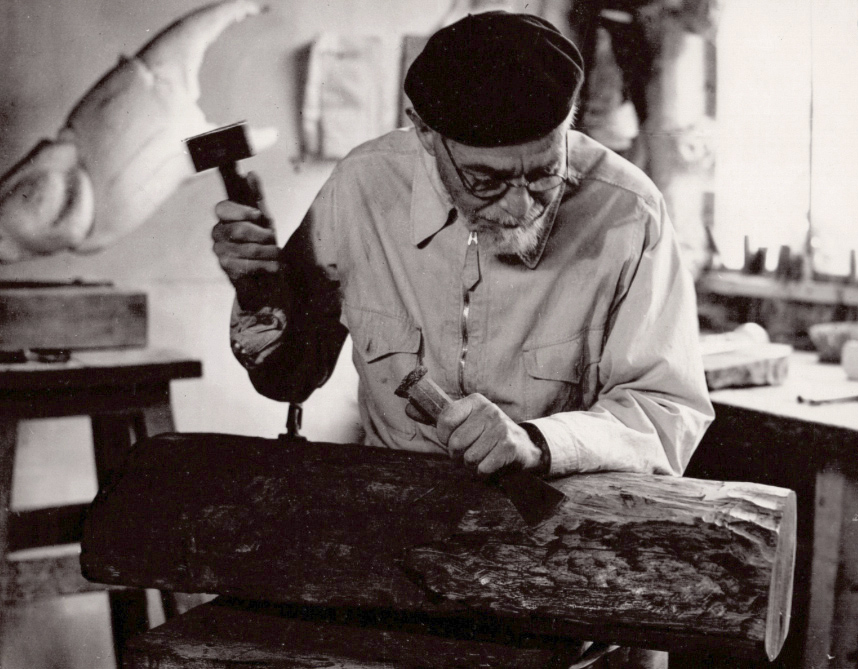
Gaston Le Bourgeois
French, 1885-1953
Despite being principally a decorative artist and carving most of his output in wood, the works that Le Bourgeois chose to cast into bronze are ideally
suited to that medium as well. Sometimes, as in the case of his ‘Head of a Panther’, the surface of the wood original is apparent in the bronze finish, but
this in no way detracts from its overall appeal.
Le Bourgeois decorated interiors for private clients and also public spaces. In the mid 1920s he also worked with the designer Emile-Jacques Ruhlman. In the 30s he was head of the sculpture atelier at the école de l’Union centrale des Arts décoratifs. In 1940, he was invited to appear at the prestigious Venice Biennale.
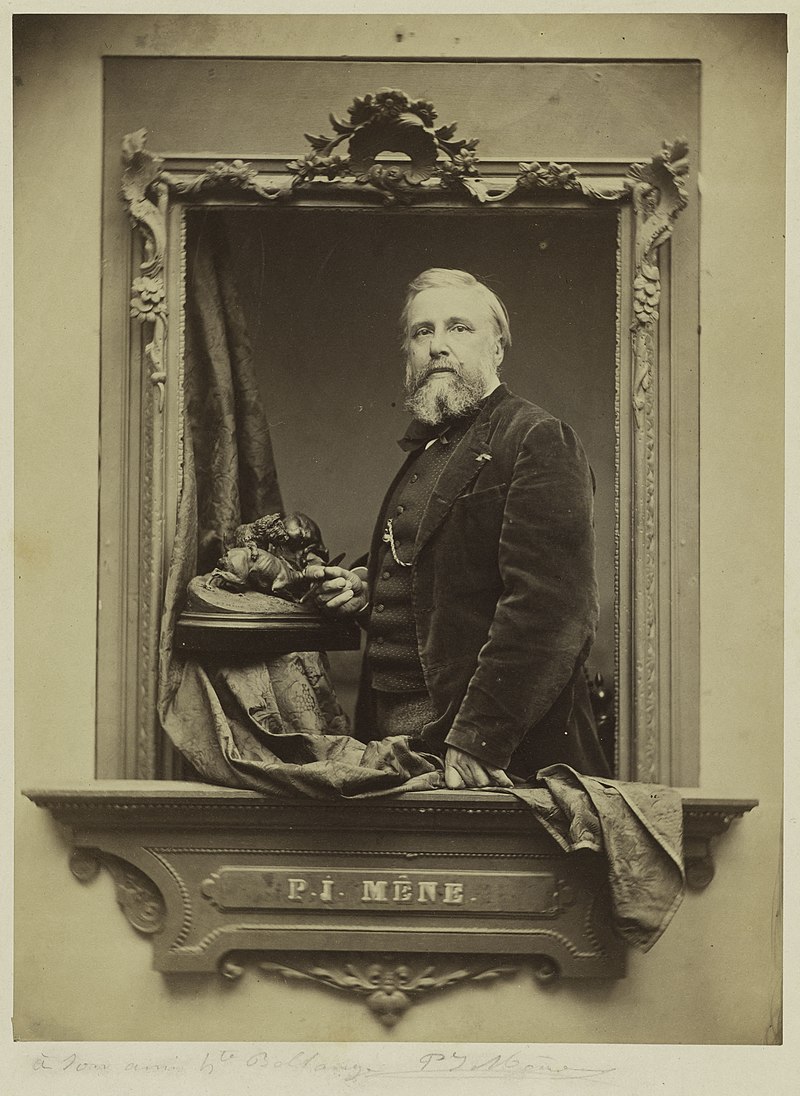
Pierre-Jules Mene
French, 1810-1879
L’esprit, la finesse, la vérité du talent de cet artiste. Louis Auvray
Known as the Landseer of sculpture, Mene’s work was as popular during his lifetime in England as he was in France, even though he never actually visited these shores. His sculptures capture with great elegance everyday scenes of predominantly domestic subject matter. His attention to detail and anatomy was matched by the care with which they were cast in his own foundry. He was the pre-eminent member of the group of sculptors during the middle of the 19th Century known as “Les Animaliers”.
The delicacy and natural form in his sculpture was, in part, a result of the influence of the painters Landseer and Carle Vernet. From Landseer, Mene found not only subject matter but an expressive element – sentimentality. Landseer’s strong influence can be readily seen in Mene’s large and intricate model of ‘After the Hunt in Scotland’. From Vernet, Mene captured the verve and spirit of the painter’s compositions. By incorporating these elements into his art, Mene’s sculptures possessed a character and natural appeal of their own. Over a century later Mene has emerged as one of the foremost sculptors of the ‘Animalier’ school and surpassed all others in his portrayal of animals in the realist form.
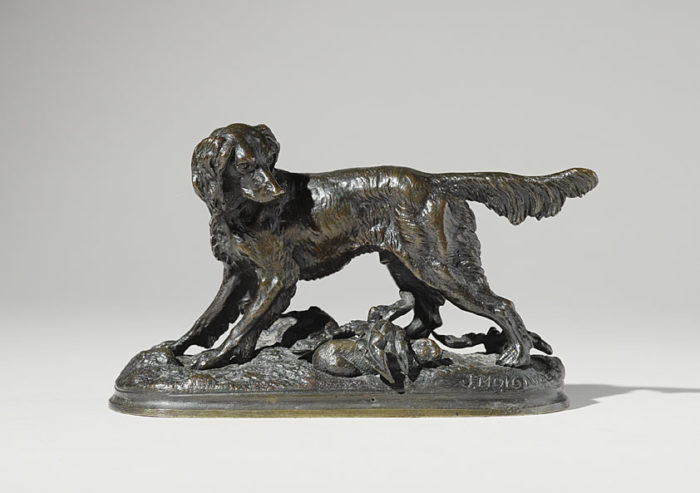
Jules Moigniez
French, 1835-1894
Models of different breeds of dog were as well as birds Moigniez’s most favoured and popular subject. He appears to have concentrated particularly on the pointer and setter breeds and to have modelled many individual characters, perhaps taking dogs he knew as his subjects.
One of the leading sculptors of the nineteenth century known collectively as ‘Les Animaliers’, Moigniez was accomplished at modelling a wide variety of animals and birds, all of which combine a truth to nature with a sense of romanticism.
The quality of casting and finishing of his work is particularly high and owes much to Moigniez’s father who set up a foundry in 1857 solely with the intention of producing his talented son’s work. Above all Moigniez’s work is always decorative and appealing to the eye. In a period where competition was steadily on the increase, Moigniez excelled and was a favourite amongst the collectors of the day. His bronzes constantly display a high level of skill and modelling technique but lose nothing of their decorative appeal in his strive for excellence.
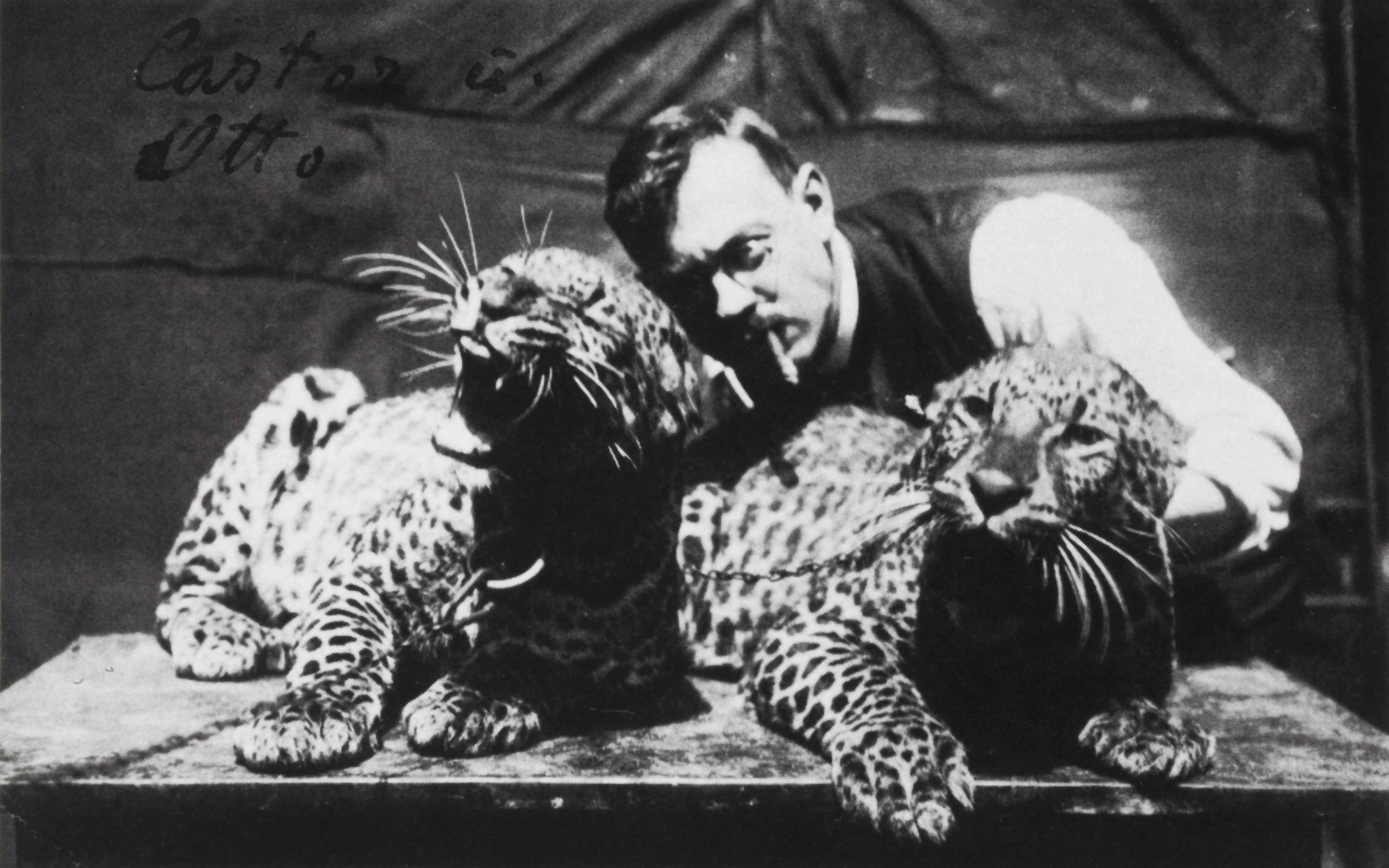
Joseph Franz Pallenberg
German 1882-1946
Pallenberg’s sculptures always remain very close to nature. Quite often, it is possible to detect the individual animal he used as models. He did not want to create a stereotype representative of any species, but mostly made actual portraits of a specific beast. The range of animals he depicted is vast, including many rare and endangered species. Horses, big cats, and bears fascinated him particularly. His oeuvre encompasses single animals as well as groups of two or more, shown at rest, playing, fighting, or hunting – an exceptional diversity in the work of one artist. The sculptures are precise depictions of both the animals’ anatomy and movements as well as their behaviour.
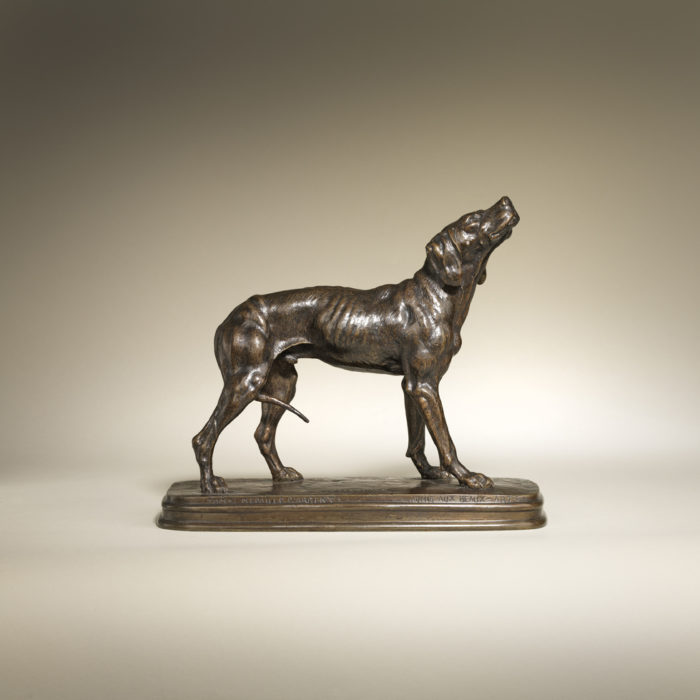
Ferdinand Pautrot
French, 1832-1874
He stands with Pierre-Jules Mene and Jules Moigniez as one of the foremost sculptors of the period, whose precision in modelling and obvious passion for his subject make him still one of the most popular nineteenth century animal sculptors today.
Pautrot had a brief but distinguished sculptural career within the Animalier school. His numerous models of birds and dogs are of a very fine quality and are both naturalistic and well-composed. Pautrot combined studies of grouse, pheasant, partridge, and hares with hunting dogs.
Pautrot exhibited at the Paris Salon from 1861 to 1870. Canines were certainly his most favoured and popular subject matter, and his depictions of working hounds illustrate a great wealth of skill and sensitivity for the subject.
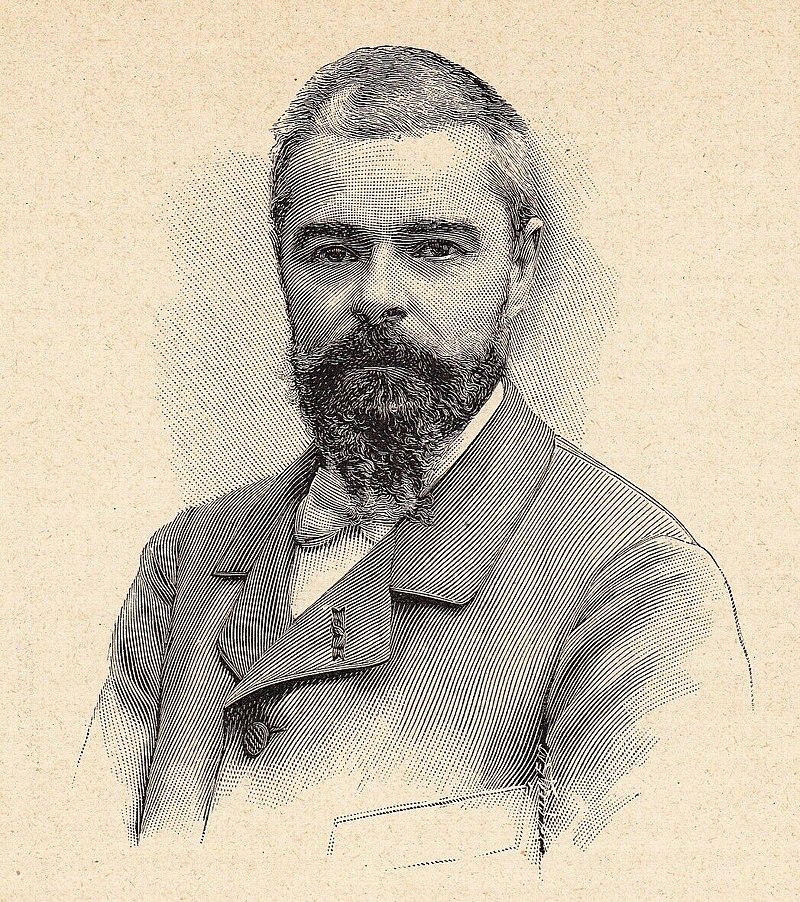
Peter Victor
French 1840-1918
He depicted several dogs, horses, bulls, with meticulous precision. Nothing was left out, tufts of hair, lengths of limbs; all was taken from a specific model. Therefore, he was truly an animal portraitist; one can easily observe in his works his extreme adroitness, almost virtuosity. Each and every one of his animal portraits is masterpiece, if one uses the term in its old meaning: “of faultless execution”.
Peter was best known for his small portrait medals and reliefs depicting animal subjects. He was also much in demand as a finisher of other sculptor’s marbles, including those of Rodin. He had a particular affection for animals, keeping a bear and a young lion in his studio.
The commissions he received came mostly from sculptors, and in 1901 he became professor of sculpture at the École des Beaux-Arts in Paris.
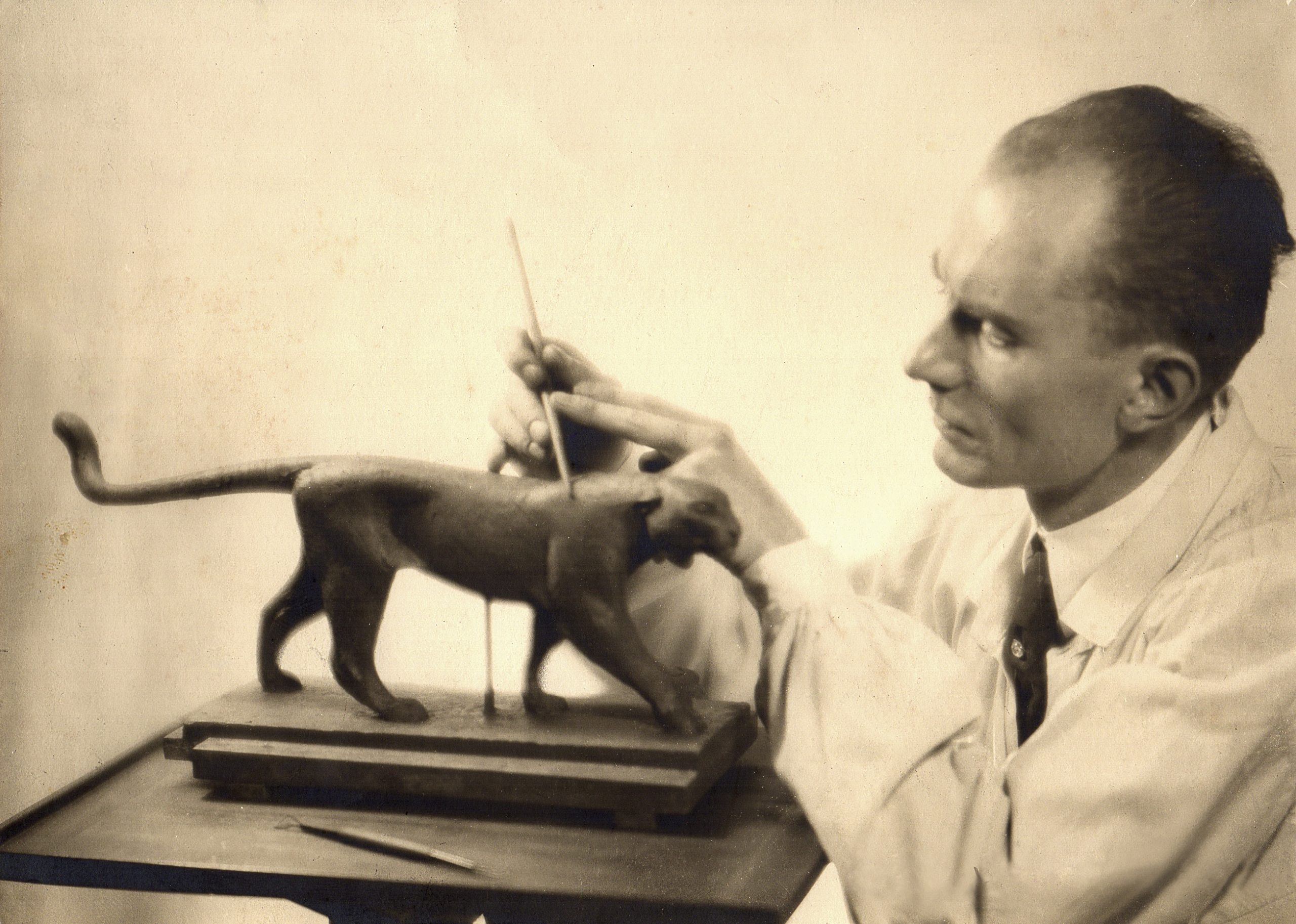
Armand Petersen
French, Swiss 1891-1969
The close observation of animals formed the mainstay of his sculptural work. He studied his subjects in depth, trying to uncover the most distinct behaviour traits of each animal.
Unlike his counterpart Francois Pompon, who stuck almost exclusively to birds, Petersen produced several mammals, whose character he brought to the fore with his refined modelling style.
In 1926 he joined a group of artists, led by François Pompon, who met regularly at the Jardin des Plantes to observe the animals. During this period, he was introduced to the dealer Edgar Brandt and participated at the first Animalier exhibition, which was held at the Galerie Brandt in 1927.
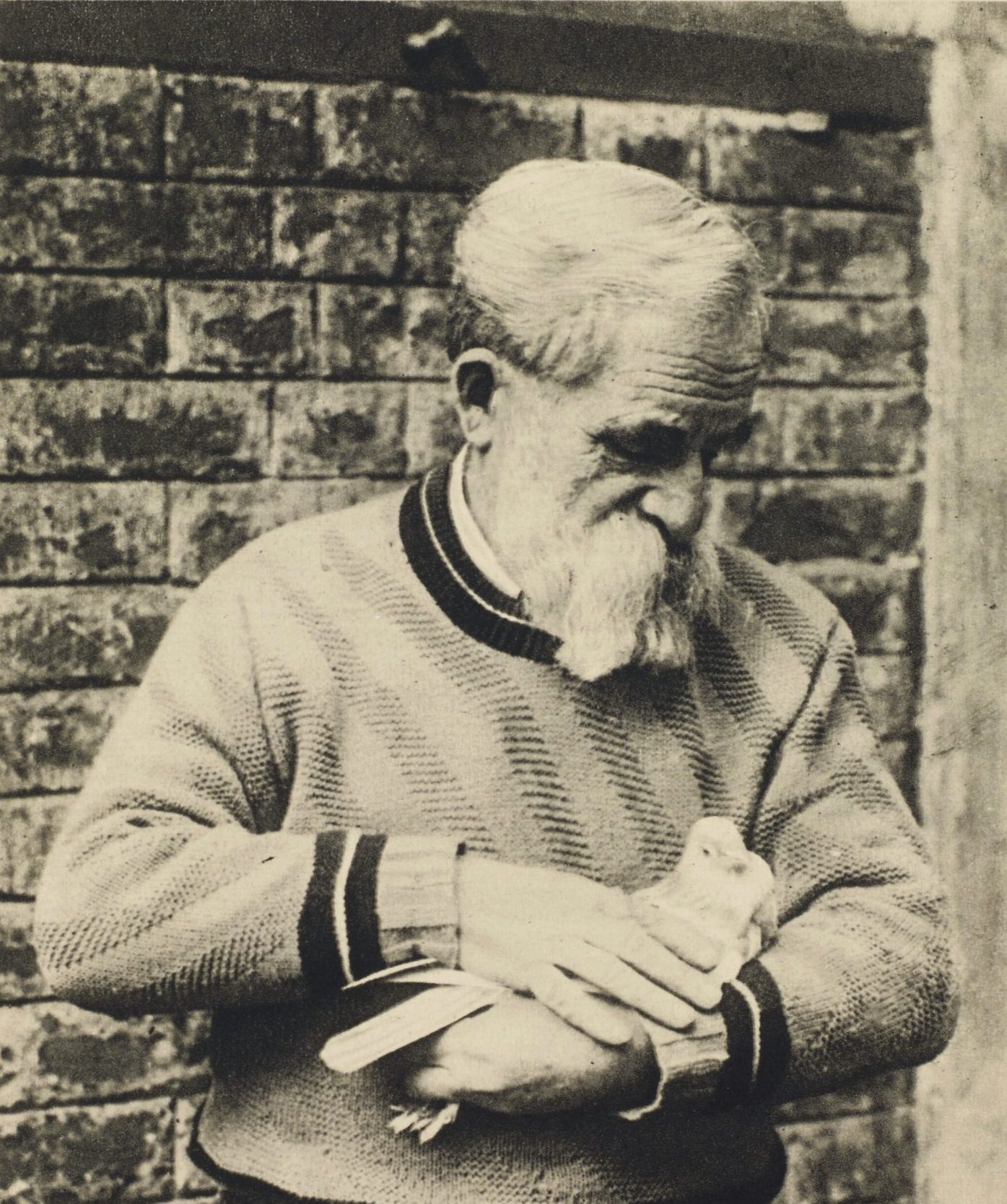
Francois Pompon
French, 1855-1933
‘You have to look at the animal from a distance. Close to you see all the unimportant detail. From a distance the subject takes on its real significance. The formal relationships become apparent. But you must still simplify, make sacrifices, and deform in order to gain expression.’ Francois Pompon
Pompon’s Polar Bear, begun in 1920 and reworked in different forms for almost fifteen years, cemented the artist’s reputation, becoming a classic of modern sculpture. A series of other signature pieces – panthers, doves, stags, bison and many others – issued from is hand, representing an extraordinary triumph over early adversity, and an increasing burgeoning of talent. Pompon resumed his study of domestic and farm animals also, and in 1931 he was instrumental in setting up ‘Les Douze’, an association of ‘Animaliers’. Other important members were Jouve, Poupelet and Guyot.
Pompon was among that generation who would shift the whole pattern of a career in sculpture away from official patronage and into the modern age of the art market.
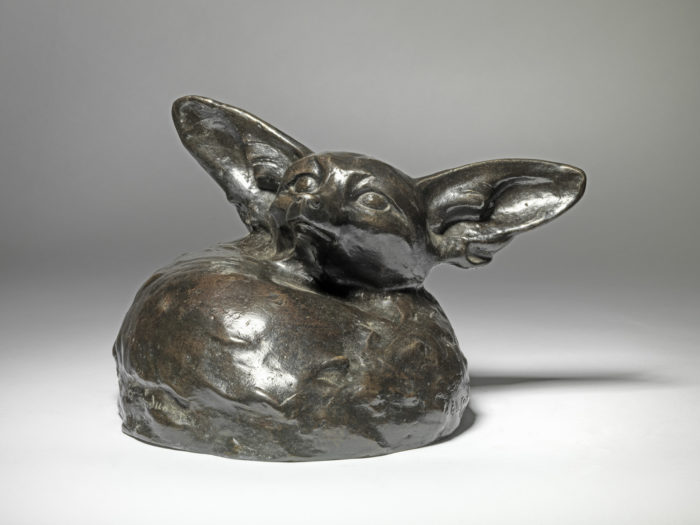
Edouard-Marcel Sandoz
Swiss, 1880-1971
‘On prend une pierre, on devine l’animal qui est dedans et l’on enleve ce qu’il y a de trop’. Edouard Marcel Sandoz
Sandoz produced an enormous yet unique body of work encompassing a wide range of animals, the bulk of them imbued with his brand of stylisation. For me, he is undoubtedly one of the leading twentieth century Animaliers, and his work epitomises the differences between the realism of his nineteenth century counterparts and the stylised modernism of his contemporaries.
Like his compatriot and contemporary Pompon, Sandoz worked in series, making variations on birds and other animals, often combining them with semi-ornamental elements such as bowls or dishes, suggesting a use as a birdbath, bird table or other garden feature. In his work, animals can become handles of paper knives, bases of candlesticks, bookends, or other semi-utilitarian objects
Sandoz himself had two pet monkeys, called Joseph and Madame Putiphaz, who lived with him in his studio in Paris. He sculpted over 80 models of monkeys both single and in groups.
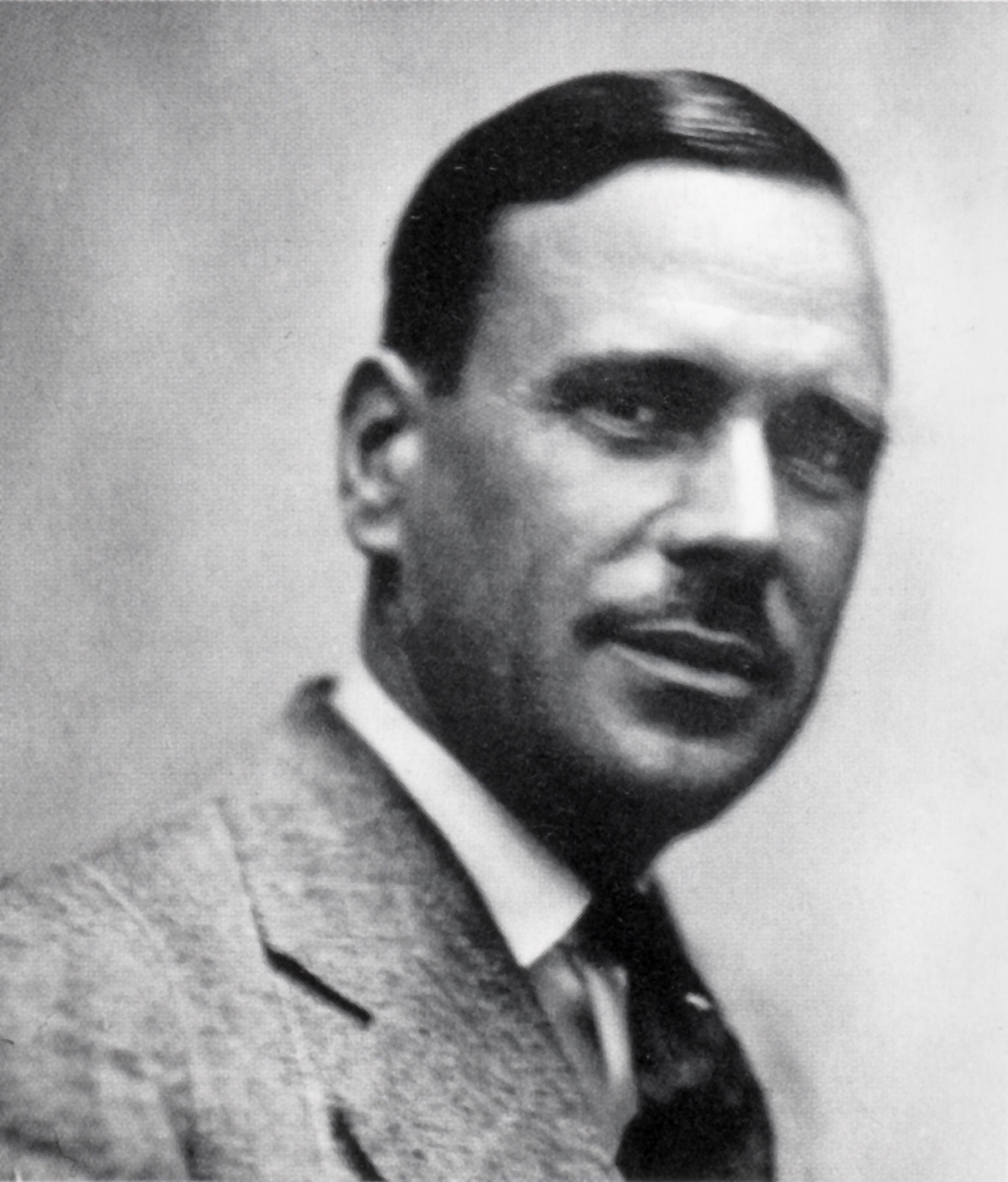
Sirio Tofanari
Acquainted with the life of animals in the wild from his early hunting expeditions, his fascination with the animal world grew as he advanced in maturity.
Stylistically the early sculpture of Sirio Tofanari is clearly comparable to that of the great early twentieth century master Rembrandt Bugatti. He shared Bugatti’s impressionistic approach and the translation of character and detail into sculpture. Later in life Tofanari witnessed the changing forms of the Art Nouveau Movement which swept the continent, and his later works reflect suggestions of its stylistic impact, hints of which we can also see in this work.
His sculptures illustrate his sensitive and perceptive observations of his subjects; feathered and bovine alike. Rarely has a sculptor ever brought to life so attractively the gentle affection and attachment between creatures which are so clear from this artist’s composition and form. The surface details in his work illustrate his vivid appreciation of the splendid diversity of the animal kingdom.
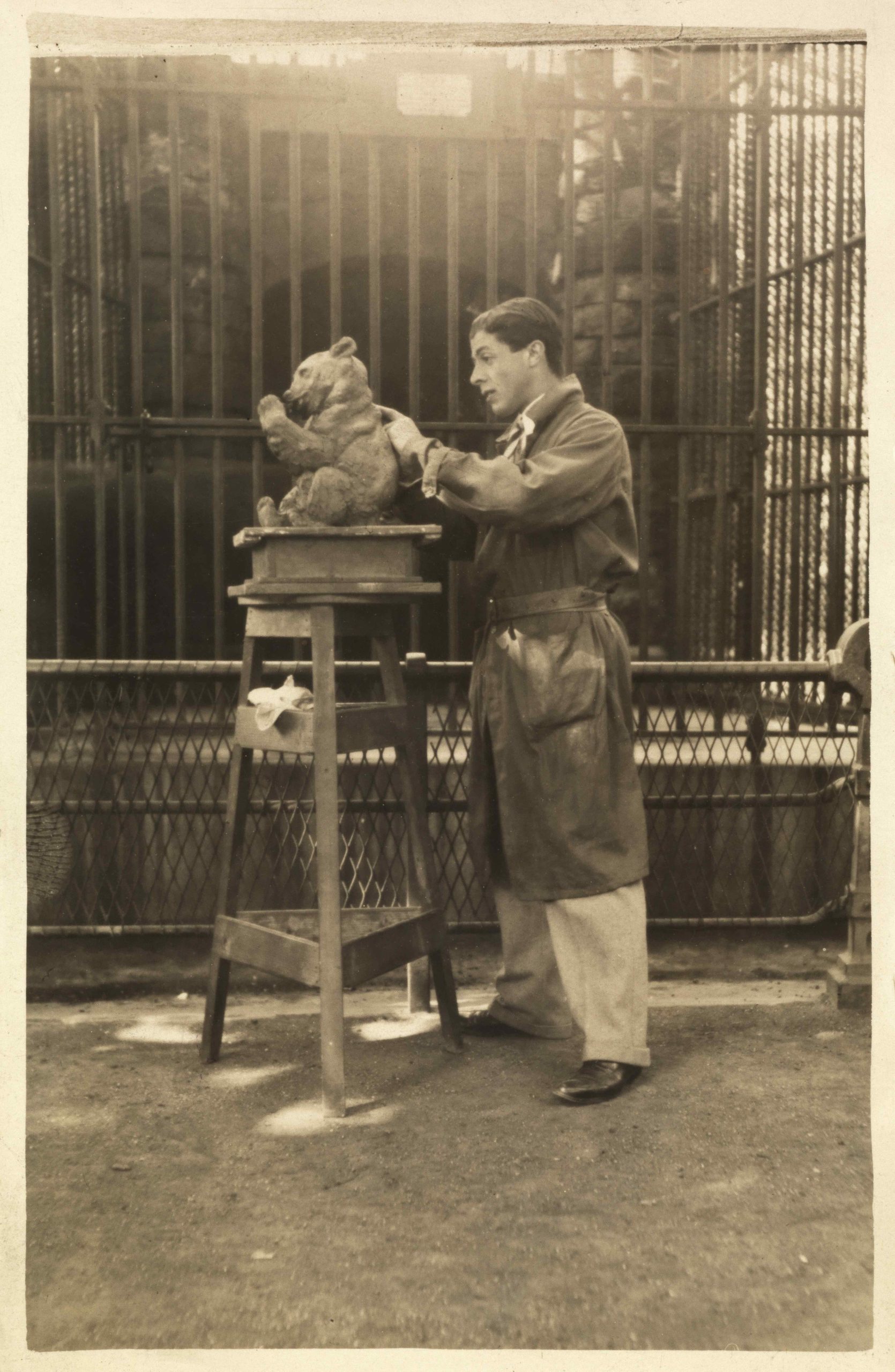
Thierry Van Ryswyck
Belgian, 1911 - 1958
The success and appeal of his sculpture lies in Van Rijswyck’s observation of the animal in its surroundings and his ability to capture them in characteristic, evocative and elegant poses.
Van Rijswyck concentrated primarily on modelling young exotic animals, many of which were new to Europe and had only recently been imported from the Colonies. Antwerp Zoo had a reputation for acquiring the most exotic imported species to be seen in mainland Europe.
Like Rembrandt Bugatti he was intrigued by the individual personalities of each animal he sculpted and was keen to portray their temperament and character. His work was cast in several mediums including plaster, terracotta, ceramic, and bronze, but rarely dated.
In some of Van Rijswyck’s sculptures, elements of the Art Deco style, so strong in the 1920’s and 1930s are evident. He achieved this by exaggerating areas of the animals’ anatomy and making them more angular, thus making the overall shape of the animal and composition of the sculpture more geometric in form.
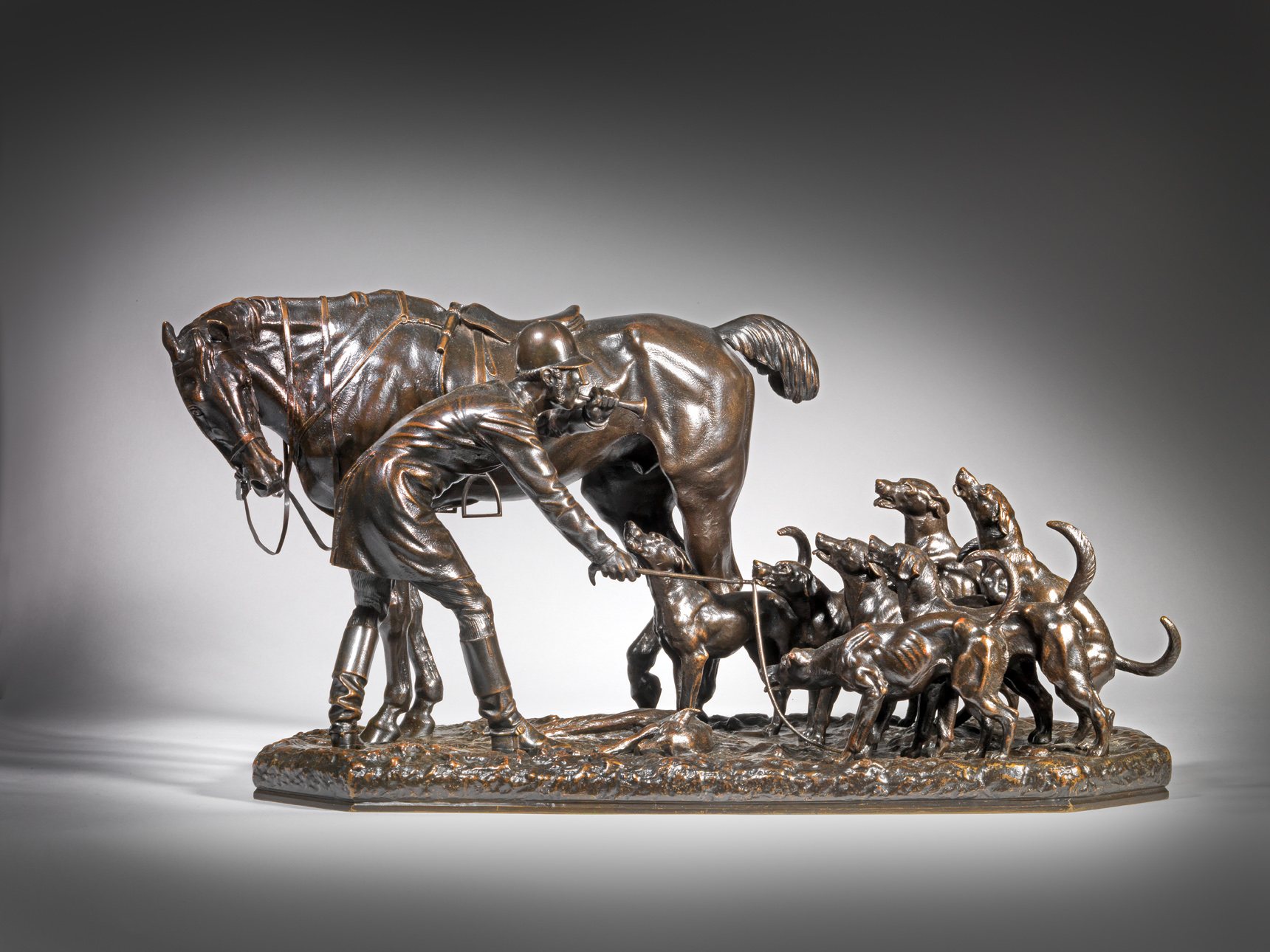
John Willis Good
English, 1845-1879
Willis Good’s sculptures were justifiably popular during his lifetime and reproduced in bronze, sterling silver and silver-plated bronze, often by Elkington & Co., of Birmingham, a company founded in the 1840’s who were pioneers in the field of electroplate, electrotyping, and Sheffield Silver. At the Great Exhibition of 1851 they exhibited under the name ‘Elkington and Mason’.
Willis-Good, the only English counterpart to the French ‘Animalier’ sculptors, produced only ten to fifteen models in his short and tragic life. A pupil of Boehm who was Queen Victoria’s favourite sculptor, Willis Good’s sculptures excel in their ability to capture not just the sport but also the quintessential English quality of the sporting life.
He made his Royal Academy début in 1870, and over the following decade showed a series of equestrian pieces in bronze and terracotta. His works display staggering accomplishment, skill, and naturalism. Certainly, his empathy with animals shows him familiar with the hunting and racing world, and it is possible that he himself was a horseman.

